Joaq uín
current issues / actualidad
Privilege perverts America’s constitutional heritage
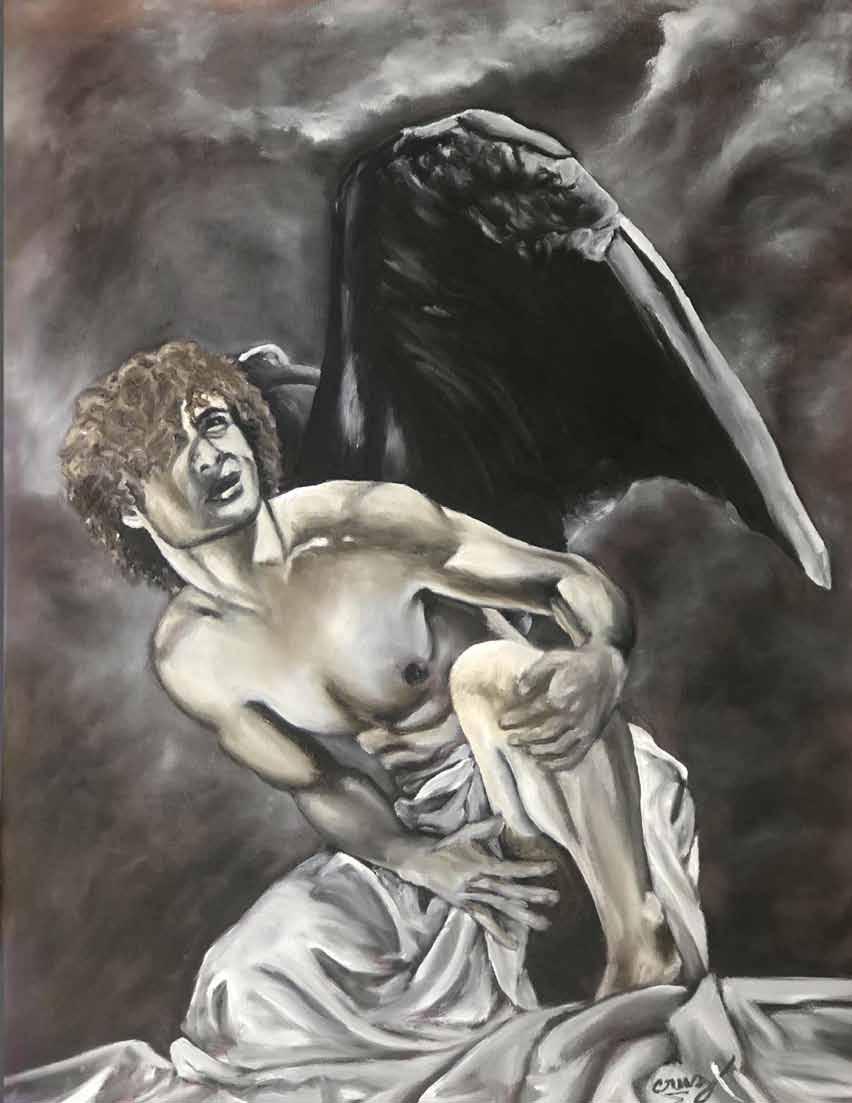
Privilegio pervierte legado constitucional norteamericano
14th Amendment
La Decimocuarta Enmienda
OPiniOn / OPiniÓn
Another September 11 worth remembering Otro Septiembre 11 digno de recordar
civil r ights / derechOs civiles
Revisiting the Chicano Moratorium II
Revisitando la Moratoria Chicana II

educatiOn / educaciÓn
Rethinking Education: Lesson Plan #3
Replanteando la Educación: Currículo #3
l aBOr issues / teMas laBOrales
Xenophobia and Union Values
La Xenofobia y los Valores Sindicales
SEPTEMBER 2023 • YEAR 11 •
•
Nº124
$3.50
Joaquín
Our mission is to provide the latino community of california’s central valley with an unbiased mirror of our society, to advocate civic duty and participation, to celebrate the successes and achievements of our peers, and to provide a tribune for emerging latino leadership.
Personnel
Editor-in-Chief
Roberto A. Radrigán radrigan@joaquinmag.com

Contributors
Sonya Fe, Art Editor
Las Cruces, NM
Andy Porras
Sacramento, CA
Richard Soto
Tracy, CA
Thomas Block
Lorain, OH
Dave Wellenbrock
Lodi, CA
Ed Ramírez
Linden, CA
David Stuart
Sacramento, CA
Editorial boa rd
Inés Ruiz-Huston, PhD
Gene Bigler, PhD
Richard Ríos, MA, MS
Paula Sheil, MA
Manuel Camacho, MA
Jeremy Terhune, BS
Candelaria Vargas, BS
Mercedes Silveira, MA
Composition, Layout & All Illustrations (unless noted)
Gráfica Design
Translations
roberto radrigán & ronald Godoy
Offices/ Advertising
1 North El Dorado Stockton, CA 95202 (209) 513-7749
info@joaquinmag.com
www.joaquinmag.com
Joaquín is an English & spanish bilingual publication addressing relevant Latino issues in the California’s northern Central Valley. it is published monthly by Gráfica Design, LLC. a Stockton-based diversified advertising & bilingual services.
Submissions for publishing
We accept free, informational and editorial content. If you feel you have unique, fresh and compelling content to share, please send your writing, photo, art, etc. to editor@joaquinmag.com for consideration. All content must be current, unpublished and cannot advertise any particular business or service. Material can be written in English or spanish. All material submitted for consideration will not be returned except upon request.
Disclaimer: t he views and opinions expressed in this issue are those of the authors and do not necessarily reflect the opinion or position of Joaquin Magazine
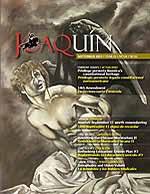
ALL RIGHTS RESERVED. Any use of materials from this publication, including reproduction, modification, distribution or re-publication, without the prior written consent of Gráfica Design, is strictly prohibited.
SEPTEMBER 2023
in this issue
cover art angel caÍdO by saúl cruz Manteca, ca
En Este Número
Current Events / Actualidad
Privilege perverts america’s constitutional heritage
Privilegio pervierte legado constitucional norteamericano
Opinion/ Opinión
another september 11 worth remembering Otro septiembre 11 digno de recordar
Civil Rights / Derechos Civiles revisiting the chicano Moratorium ii revisitando la Moratoria chicana ii
Education / Educación rethinking education: lesson Plan #3 replanteando la educación: currículo #3
Poetry / Poesía richard ríos
Art Focus /Enfoque Artístico saúl cruz: Painting the soul Pintando el alma
Current Events / Actualidad
14th amendment la decimocuarta enmienda
Labor Issues / Temas Laborales
Xenophobia and union values la Xenofobia y los valores sindicales
Porrazos
Behind the mexican exodus to el nOrte: the King of Mexico detrás del éxodo mexicano a ‘el norte’: el rey de México
2 Joaquín sePteMBer 2023
A Novel / Novela Mi casa es su casa (chapter vii) (capítulo vii) continuations / continuaciones 3 5 8-10 11 13 14-16 17 19 21 23 26-27
Privilege Perverts America’s Constitutional Heritage
dr. gene e. Bigler, stockton, ca
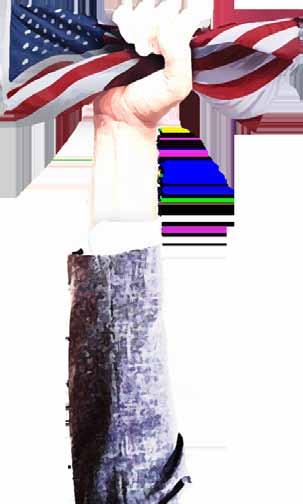
Privilegio pervierte Legado Constitucional Norteamericano
the increasing abuse of privilege in many parts of our American political system have gradually undermined the democratic spirit of respect and observance for the unwritten norms and ethics of many of our institutions and now threatens our democracy itself. No, this is not a reference to the supposedly awesome power of the Deep State, just the reverse. Look at just a few of the ways we have recently seen our Constitutional democracy being actively undermined by the assertion of privilege:
• Supreme Court judges openly flaunt the traditional ethics of judicial and government service while receiving enormous economic benefits from billionaires and political activists with obvious interests before the Court, and Justice Alito on behalf of his rightwing extremists even openly challenges the Article 3, Section 2, authority of Congress for regulation of the judiciary;1
• A single U.S. Senator, Tommy Tuberville (R-AL), is allowed by his caucus to block all promotions and reassignments of hundreds of senior military officers in all u s. Armed Forces and thereby threatens the orderliness of our military and national security because of his personal rejection of the right of women in the military community for access to abortion;2
• The six co-conspirators indicted with President Trump for trying to undermine the 2020 election and peaceful transfer of presidential power all show a complete disregard for their responsibilities as officers of the court and Constitutional oaths of office. Being President or one of his lawyers does not confer the right to interfere with the peaceful transition of power which George Washington introduced to the world;3
• President Trump’s indictment on more than 40 counts for violation of national security and other abuses in the handling of government documents over more than two years in the Mar-a-Lago case, actions that have led to firing, long jail sentences, and other harsh reprisals almost immediately for hundreds of u s. service members and
El creciente abuso de privilegios en muchas partes de nuestro sistema político estadounidense ha socavado gradualmente el espíritu democrático de respeto y conformidad con las normas y éticas no escritas de muchas de nuestras instituciones —y ahora amenaza nuestra propia democracia. No, esto no es una referencia al supuestamente omnipotente poder del Deep State (Gobierno Clandestino), sino todo lo contrario. Miremos sólo algunas de las formas en que recientemente hemos visto cómo nuestra democracia constitucional se ve activamente socavada por la afirmación de privilegios:
• Los jueces de la Corte Suprema hacen abierto alarde de la ética tradicional del servicio judicial y gubernamental mientras reciben enormes beneficios económicos de multimillonarios y activistas políticos con obvios intereses ante la Corte —y el juez Alito, en nombre de sus extremistas de derecha, incluso desafía abiertamente el Artículo 3, Sección 2, autoridad del Congreso para regular el poder judicial;1
• Su camarilla permite a un solo senador estadounidense, Tommy Tuberville (R-AL), bloquear todos los ascensos y reasignaciones de cientos de oficiales militares de alto rango en todas las Fuerzas Armadas de los Estados Unidos y, por lo tanto, amenaza el orden de nuestro ejército y la seguridad nacional debido a su rechazo personal al derecho de las mujeres de la comunidad militar al acceso al aborto;2
• Los seis abogados-cómplices acusados junto con el presidente Trump de intentar socavar las elecciones de 2020 y la transferencia pacífica del poder presidencial muestran un total desprecio por sus responsabilidades como funcionarios de la corte y su juramento constitucional del cargo. ser Presidente o uno de sus abogados no confiere el derecho de interferir en la transición pacífica del poder que George Washington introdujo en el mundo;3
• La acusación del presidente Trump de más de 40 cargos por transgresión de la seguridad nacional y otros abusos en el manejo de documentos gubernamentales durante más de dos años en el caso Mar-a-Lago —acciones que han conducido a despido, largas sentencias
continued on next page continúa a la vuelta
sePteMBer 2023 Joaquín 3
current events • actualidad
current events • actualidad
and respect in the system.
other authorized employees, reflects his consistent disdain for national security, the rule of law, and his Constitutional Oath of Office;
• Despite the scores of judicial decisions against trump from private business scandals to rape and fictitious electoral fraud claims and the new crop of 30 indictments for felonies in three other new major court cases against him and his impeachment for insurrection, a majority of Republican voters and candidates for the presidency say they would still support trump for President if he were nominated;
• For over six months the Republican majority in the House of representatives constantly refuses to allow any substantive legislative business to take place while threatening to bring disaster on the country by defaulting on payment of the public debt or refusing to pass a government budget while repeatedly abusing its own investigative authority.4 When many Americans think about our political system, they forget that our Constitution was structured with separation of powers and other checks and balances that depend on informally upholding egalitarian and majority rule principles. t he Framers of the Constitution understood that the exercise of privilege by individual states and powerful leaders under our Article of Confederation from 1781 to 1787 brought the government of our newly independent country to a nearly disastrous standstill. It could not pay debts, collect taxes, or get anything else done, just like the Republican controlled House impedes legislative action at the present time. Accordingly, in the Constitutional Convention in 1787 the Framers obviously intended that the work of Congress, the Supreme Court, and the election of the President should all be built on the principles and exercise of majority rule and equality of all before the law.
one of the defects in the system the Framers created and recognized without saying so explicitly was the allowance they made for the continuation of a slave owning and legally authorized society that bestowed anti-egalitarian privileges and allowance for exploitation and accommodated provisions designed explicitly to protect the system of white power. Indeed, the impetus for eliminating white indenturement in the pre Revolutionary War era, especially in Virginia, South Carolina and Georgia, as black slavery was being expanded was to increase the racial gulf and the supply of white regulators to control black slavery. Similarly, much of the impetus for the second amendment came from slave holders largely concerned with creating and arming the militia systems they saw as necessary to control the burgeoning size of the enslaved population. Many of our great thinkers and activists, especially African-Americans from Frederick Douglas, and W.E.B. Dubois to Henry Louis Gates, Jr., Ibram X. Kendi, and Eddie S. Glaude, Jr. today, recognized the carryover of the system of white power privilege over immigrants in general and especially those of color or religious difference.
Constitución fue estructurada con separación de poderes y otros controles y contrapesos que dependen en la aplicación informal de principios mayoritarios e igualitarios. Los redactores de la Constitución se dieron cuenta que el ejercicio de privilegios por parte de estados individuales y líderes poderosos —bajo nuestro Artículo de Confederación de 1781 a 1787— llevó al gobierno de nuestro recién independizado país a un estancamiento casi desastroso. No podía pagar deudas, recaudar impuestos ni hacer nada más, del mismo modo que hoy la Cámara controlada por los republicanos impide cualquier acción legislativa. En consecuencia, en la Convención Constitucional de 1787, los redactores obviamente pretendieron que el trabajo del Congreso, la Corte Suprema y la elección del Presidente se basaran en los principios y el ejercicio del gobierno de la mayoría y la igualdad de todos ante la ley.
Gene Bigler, PhD Writer & consultant on global affairs, former professor, retired diplomat
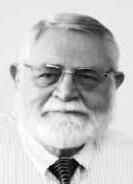
For that approach to work, so much more depended on the willingness of all the actors in the system to act independently and voluntarily to uphold the norms and processes needed to provide governance, act in the spirit of the laws and institutions, including their equality before the law, rather than ruthlessly pursuing any advantage and denying to others their expected and traditionally granted rights
concludes on page 26
Para que esta idea funcionara, mucho dependía de la voluntad de todos los actores del sistema; que actuaran de forma independiente y voluntaria adhiriéndose a las normas y procesos necesarios para proporcionar gobernanza; actuar en el espíritu de las leyes e instituciones —incluida su igualdad ante la ley— en lugar de aprovechar descaradamente cualquier ventaja y negar a otros los derechos y el respeto esperados y tradicionalmente otorgados en el sistema.
de cárcel y otras duras represalias casi de inmediato contra cientos de miembros del servicio estadounidense y otros empleados autorizados— refleja su constante desdén por la seguridad nacional, el estado de derecho y su juramento constitucional;
• A pesar de las decenas de veredictos judiciales contra trump: desde escándalos de negocios privados; a acusaciones de violación sexual; a fraude electoral ficticio; la nueva cosecha de 30 acusaciones por delitos graves en otros tres nuevos e importantes casos judiciales contra él; y su juicio de destitución por insurrección —una mayoría de votantes republicanos y los candidatos a la presidencia dicen que seguirían apoyando a trump como presidente si fuera nominado;
• Durante más de seis meses, la mayoría republicana en la Cámara de representantes se niega constantemente a permitir que se lleven a cabo asuntos legislativos de importancia alguna —al tiempo que amenaza con provocar un desastre en el país al incumplir el pago de la deuda pública, o negarse a aprobar un presupuesto gubernamental, todo esto mientras abusa repetidamente de su propia autoridad investigadora.4 Cuando muchos estadounidenses piensan en nuestro sistema político, olvidan que nuestra
uno de los defectos en el sistema que los redactores crearon —y reconocieron sin decirlo explícitamente— fue la concesión que hicieron para la continuación de una sociedad legalmente autorizada a la propiedad de esclavos, la que otorgó privilegios anti-igualitarios y concesiones para su explotación, y de paso acomodó disposiciones diseñadas explícitamente para proteger el poder blanco. De hecho, la iniciativa de eliminar la contratación semiesclavos blancos (indentured labor) previo a la Guerra de i ndependencia —especialmente en Virginia, Carolina del Sur y Georgia— reemplazándola con la expansión de la esclavitud negra, se implementó aumentando la brecha racial y el número de reguladores blancos para controlar la esclavitud negra.
De manera similar, gran parte del impulso para la Segunda Enmienda nació de los propietarios de esclavos, en gran medida empecinados por crear y armar un sistema de milicias —algo que consideraban necesario para controlar el creciente tamaño de la población esclavizada. Muchos de nuestros grandes pensadores y activistas, especialmente los afroamericanos —de Frederick Douglas y W.E.B. Dubois a Henry Louis Gates, Jr., Ibram X. Kendi y Eddie S. Glaude, Jr. hoy— reconocieron que el sistema de privilegios del poder blanco se había
one way of understanding the differential impact of white concluye en pág. 26
4 Joaquín sePteMBer 2023
Privilege from the previous page
Privilegio viene de la vuelta
otro sept.11 digno de recordar
roberto radrigán, stockton, ca
Another september 11 Worth remembering
Permítanme hablarles del 11 de septiembre. no en Nueva York, en 2001, con casi 3 000 víctimas —y ciertamente digno de toda solemne memoria. Pero yo hablo de mi tierra, Chile, en 1973, con unas diez mil víctimas seguidas de 17 años de miseria dictatorial.
Hasta finales del siglo XVIII, y hasta que las 13 colonias británicas de Norteamérica se sacudieron su dependencia monárquica, no eran muchos quienes creían que un país pudiese funcionar sin un gobernante ungido (normalmente sostenido mediante alguna combinación de temor, espada, cruz, o privilegio hereditario.
semioculto en los lejanos confines de América del Sur, el papel de Chile como nación independiente comenzó poco después de la de Estados Unidos con su Constitución de 1811 y una larga curva de aprendizaje que —salvo periódicos e irrelevantes sobresaltos— mantuvo al país unido mucho mejor que la mayoría de sus vecinos de la América española postcolonial. Esta importante estabilidad ayudó enormemente al país a librar dos guerras extranjeras que dieron forma a su singularmente larga y estrecha geografía. Más importante aún, su éxito en los campos de batalla se debió, en gran parte, (y a diferencia de sus enemigos) a que eran gobiernos democráticos los que dirigían a Chile.
El siguiente y crítico desafío se produjo durante la lucha global
Allow
me to tell you about september 11. not in New York, in 2001, with almost 3,000 victims, and certainly worthy of every solemn remembrance. But I am talking now about my homeland, Chile, in 1973, with an estimated ten thousand victims followed by 17 years of dictatorial misery.
Up to the late 1700s, and until the 13 british colonies in north America shed their monarchical dependency, not too many people thought it was possible to have a functioning country without an anointed ruler —typically sustained through some combination of fear, the sword, the cross, and hereditary privilege.
America. This rather remarkable stability helped the country immensely in fighting two foreign wars that shaped its oddly long and narrow geography. More importantly, its success on the battlefield was due in no small part (and unlike its foes) to the leadership democratic governments provided to Chile.
t he next critical challenge came after the global struggle against the rise of fascism that was followed by the Cold War. As a small, vulnerable outlier on the global stage in the post WWII era, Chile struggled to remain democratic, even while all around it revolutionary movements were pulling to the left, and military dictatorships to the right.
the Chilean democracy was far from perfect, of course. So as the 20th Century progressed, Chile had developed its national resources to sustain its economy, but it also failed like all the other countries in Latin America to keep the gap between the wealthy and the common folk from growing dramatically.
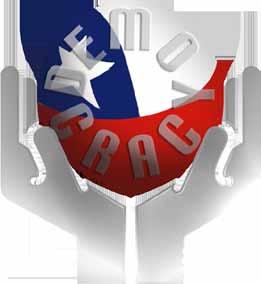
Also, by the 1960s, the survival of China, the spread of the Soviet sphere in Europe, the Cuban revolution —and the rise of credible anti-capitalistic movements in Asia and Africa— inspired civilian and armed insurrection movements all throughout Latin America as a viable way to access to the power.
Nestled in the far confines of South America, Chile’s play as an independent nation started not long after the u.s. with its Constitution of 1811, and a long learning curve that —save periodical yet irrelevant upheavals— held the country together much better than most of its neighbors in post-colonial spanish
But, again, Chile had a relevant difference with its Spanish-speaking neighbors. Since the 1940s Chile had decreed that primary education for all Chileans was mandatory, therefore its now
continúa a la vuelta continued on next page
sePteMBer 2023 Joaquín 5 opinion • opiniÓn
And a Lesson about Democracy
Y lección sobre democracia
The Other 9/11 from the previous page
literate populace was much aware of their rights, but never willing to embrace an armed insurrection. i nstead the left chose the ballot box. They almost succeeded in 1958. They became a force in 1964. And in 1970 Chile voted physician salvador Allende to the presidency —the first Socialist head of state and government in the world to be elected through a democratic process.
As described in the u s. Church Commission Report in 1975, the U.S. Department of State had been working since the early 1960s to prevent Chile from electing the left-leaning Allende as president. i n 1970, after learning of Allende’s victory in the polls, Nixon candidly (and vociferously) declared he wanted to make Chile‘s economy scream. He was set on denying and/or helping overthrow this new leftist government in his quest to deny the soviet union and Cuba a potential ally in south America.
Attempts to prevent Allende’s election, confirmation and ability to govern abounded for the next two years —including the assassination of the Commander in Chief of Chile’s Army as a means of provoking an Army Coup. to counter the propaganda that painted his presidency as a ruthless Communist regime, Allende managed to convince Chile’s small and only (urban) guerilla group to renounce
their armed struggle and sign a promise before Congress that he would respect democracy and the separation of powers (under the us model), allow any and all political dissent, and not close any newspapers nor imprison even the worst, incendiary far-right leaders. He even resisted the entreaties of Fidel Castro who while on a personal visit spent days lecturing Allende on the futility of sustaining power without disbanding the regular armed forces and replacing them with a “popular army,” as he had done in Cuba.
none of this was enough to prove the democratic bona fides of Allende to his right wing opponents and their American friends.
t he nixon Administration demanded the return of a billion-dollar assistance program that the u s. had spent to sustain the Chilean governments of the previous decade, while denying the renegotiation of —and blocking any new— international loans. t he u s. also supported the creation of several new “trade unions” (doctors, truckers, urban bus owners, and other never before unionized groups) specifically to oppose reforms that could benefit or show improvement in the life of the poor and middle class… Allende’s base.
The Chilean economy DID scream. Produce and all basic staples disappeared from the shelves or rotted in trucks and storage facilities operated by the new transportation unions, whose permanent strike was financed by the u. s .). Public transportation and anything that rolled on wheels was parked in the hills, in makeshift and endless new parking lots. newly-created fascist groups bombed electric towers, railroad tracks and bridges —creating
Bibliography

u.s. senate church commission (cOvert actiOn in cHile 1963-1973) https://www.archives.gov/files/ declassification/iscap/pdf/2010-009-doc17.pdf
Petras, James and Morley, Morris. the united states and chile. new York: Monthly review Press, 1975 in addition to the church commission findings, the release in 1998 (25 years after the coup that deposed allende) of the state department, cia and other involved agencies’ telegrams and other communications reveal how the whole scheme evolved. comisión church del senado de estados unidos (acciÓn encuBierta en chile 1963-1973) https:// www.archives.gov/files/declassification/iscap/ pdf/2010-009-doc17.pdf
Petras, James y Morley, Morris. estados unidos y chile. nueva York: Monthly review Press, 1975 además de las conclusiones de la comisión church, la publicación en 1998 (25 años después del golpe de estado que depuso a allende) de los telegramas y otras comunicaciones del departamento de estado, la cia y otras agencias involucradas, revela cómo evolucionó todo el plan.
the fabricated chaos that would help justify military intervention.
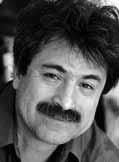
On September 10, 1973 —at the peak of all this upheaval— Allende decided to announce a national plebiscite, so the people would be able to decide if he should remain president. The Chief of the Army, Augusto Pinochet, by then a member of Allende’s Cabinet, suggested it would be best to wait until the next day. t his was because, on the following day, September 11, at the crack of dawn, Pinochet’s soldiers were to, and did, take over control every government building in the Capital.
September 11, 22 years ago, was the day the U.S. survived the most heinous attack on its soil since the War of 1812 and came out stronger and more united.
September 11, fifty years ago, was the
6 Joaquín sePteMBer 2023
opinion
• opiniÓn
Roberto Radrigán stockton, ca
day Chile lost its democracy that had held for 155 years. It took Chile 17 years to overcome General Pinochet’s military dictatorship, but it also came out stronger and it is today, arguably, the most democratic and developed country south of the Mexican border.
And, by now, both Chile and the U.S.A. clearly understand, clearly, that the struggle and work to sustain democracy is a neverending job.
El Otro 9/11 viene de la vuelta contra el ascenso del fascismo —seguido por la Guerra Fría. Como pequeña, marginal y vulnerable nación en el escenario post-Segunda Guerra Mundial, la supervivencia de la democracia chilena pasó sustos, incluso cuando a su alrededor los movimientos revolucionarios inclinaban hacia la izquierda y las dictaduras militares hacia la derecha.
Por supuesto, la democracia chilena estaba lejos de ser perfecta. A medida que avanzaba el siglo XX, Chile había desarrollado sus recursos nacionales para sostener su economía, pero no lograba —al igual que todos los demás países de América Latina— impedir que la brecha entre los ricos y la gente común creciera dramáticamente.
Además, en la década de los 60s, la supervivencia de China, la expansión de la esfera soviética en Europa, la revolución cubana — aunado al surgimiento de viables movimientos anticapitalistas en Asia y África— inspiraron la posibilidad de lograr el poder a través de insurrecciones civiles o armadas en toda la América Latina.
Pero, una vez más, Chile tenía una diferencia relevante con sus vecinos hispanohablantes. Desde la década de los 1940s Chile había decretado que la educación primaria para todos los chilenos era obligatoria, por lo que su población —ahora alfabetizada— era muy consciente de sus derechos, pero nunca dispuesta a hacerlos valer a través de una insurrección armada. Por el contrario, la izquierda eligió las urnas. Casi lo lograron en 1958. Fueron una reconocida fuerza en 1964. Y en 1970 Chile lograron elevar al doctor Salvador Allende a la presidencia, el primer socialista en el mundo elegido Jefe de Estado mediante un proceso democrático.
Como se describe en el i nforme de la Comisión Church (Senado de los EEUU) en 1975, el Departamento de Estado de los Estados unidos había estado trabajando desde principios de la década de 1960 para impedir que Chile eligiera al izquierdista Allende como presidente. En 1970, después de enterarse de la victoria de Allende en las urnas, Nixon declaró descaradamente (y a gritos) que iba a hacer chillar a la economía de Chile. En su
chile tOdaY
the ngO World Population review (usa) ‘2023 democracy index’ classifies chile as a “Full democracy”, 17th among the 72 democratic countries in the world. in the americas, chile is only surpassed by c anada (5th) and uruguay (15th). the united states (directly due to its current political turmoil) ranks 25th globally.
Democracy Pays:
Within latin american, figures from 20222023 identify chile as its leader in Quality of life—18 worldwide; the highest standard in its health system, 33rd in the world, first in competitiveness, per capita income, globalization, peace, and economic freedom. second in education after argentina.
chile hOY
el Índice de democracia de la Ong World Population review (eeuu), proyección 2023, clasifica a chile como “democracia plena”, en el puesto 17 entre los 72 países democráticos del mundo. en las américas, chile sólo es superado por c anadá (5°) y uruguay (15°). estados unidos (debido directamente a su actual agitación política) ocupa el puesto 25 a nivel mundial.
La Democracia Remunera: dentro de l atinoamérica, cifras del 20222023 identifican a chile como su líder en calidad de vida (18 a nivel mundial); el más alto estándar en su sistema de salud (33 en el mundo); primero en competitividad, ingreso per cápita, globalización, paz, y libertad económica. segundo en educación después de argentina.
afán por negar a la Unión Soviética y a Cuba un potencial aliado en América del Sur, estaba decidido a impedir y/o ayudar a derrocar a este naciente gobierno de izquierda.
Durante los dos años siguientes abundaron los intentos de impedir la elección, la confirmación y la gobernabilidad de Allende —que incluyó el asesinato del Comandante en Jefe del Ejército de Chile como medio de provocar un golpe militar.
Para contrarrestar la propaganda que pintaba su presidencia como un despiadado régimen comunista, Allende logró convencer al pequeño y único grupo guerrillero (urbano) de Chile de que renunciara a su lucha armada; firmó una promesa ante el Congreso de que respetaría la democracia y la separación de poderes (separación como el modelo estadounidense); permitió toda disidencia política; no cerró ningún periódico ni encarceló siquiera a los más incendiarios líderes de extrema derecha. Incluso rechazó los argumentos de Fidel Castro quien —durante una visita en persona a Chile— pasó días sermoneando a Allende sobre la imposibilidad de sostener el poder sin disolver las fuerzas armadas regulares y
reemplazarlas con un “ejército popular”, como él había hecho en Cuba.
n ada de esto fue suficiente para demostrar la buena fe democrática de Allende ante sus oponentes de derecha y sus aliados estadounidenses. La administración Nixon exigió el reembolso de miles de millones de dólares en asistencia que Estados Unidos había invertido en sostener a los gobiernos chilenos de la década anterior, al tiempo que negó la renegociación de (y bloqueó cualquier nuevo) préstamo internacional. Estados unidos también fue instrumental en la creación de varios y novedosos “sindicatos” (médicos, camioneros, propietarios de autobuses urbanos, y otros grupos nunca antes sindicalizados) específicamente para oponerse a reformas que podrían beneficiar o mostrar mejoras en la vida de los pobres y la clase media —quienes defendían al gobierno.
La economía chilena SÍ chilló. Todo producto básico y agrícola desapareció de las tiendas o supermercados, pudriéndose en los camiones y en almacenes operados por los nuevos sindicatos de transporte —quienes se mantenían en una perpetua huelga financiada por EEuu. El transporte público y todo lo que rodara sobre ruedas estaba estacionado en los cerros, en improvisados e interminables estacionamientos. Grupos fascistas, recién creados, bombardeaban torres eléctricas, vías de ferrocarril y puentes, creando un caos artificial que buscaba ayudar y finalmente justificar una intervención militar.
El 10 de septiembre de 1973 —en el momento más insostenible de toda esta agitación— Allende decidió convocar un plebiscito nacional, para que el pueblo decidiera si él debía seguir siendo presidente. El Jefe del Ejército, Augusto Pinochet, entonces miembro del gabinete de Allende, sugirió que sería mejor anunciarlo hasta el día siguiente. Esto se debió a que al amanecer del otro día, el 11 de septiembre, sus soldados se iban a tomar el control de todos los edificios gubernamentales de la capital —lo que así ocurrió.
El 11 de septiembre, hace 22 años, fue el día en que Estados Unidos sobrevivió al ataque más atroz en su territorio desde la Guerra de 1812… y se levantó más fuerte y más unido.


El 11 de septiembre, hace cincuenta años, fue el día en que Chile perdió la democracia que había mantenido durante 155 años. A Chile le tomó 17 años superar la dictadura militar del general Pinochet, pero también se levantó más fuerte y hoy es, probablemente, el país más democrático y desarrollado al sur de la frontera con México.
Y hoy por hoy, tanto Chile como EEUU entienden claramente que la lucha y el trabajo de sostener la democracia es de nunca acabar.
sePteMBer 2023 Joaquín 7
opinion
• opiniÓn
Después de la sangre, surgieron controversias en torno a los acontecimientos durante y después de la Moratoria Chicana del 29 de agosto de 1970. Entre ellas se encontraban acusaciones de que: rubén salazar fue atacado y asesinado por agentes del Alguacil; que provocadores se habían infiltrado en el Comité Nacional Chicano de Moratoria ( nCMC) para destruirlo; y que hubo un encubrimiento masivo de tácticas maliciosas de parte de funcionarios policiales.
Pero ¿Quién era rubén salazar? nacido en Juárez, México, pero criado en El Paso, Texas, salazar era un respetado y conocido periodista que había trabajado en varios diarios, entre ellos el Los Angeles Times —un lujo inusual en una profesión que, durante los 1950, 1960 y 1970s, era dominada por anglosajones de sexo masculino. Veterano militar, estudió en la universidad gracias al “GI Bill ” (asistencia educacional para veteranos militares), estudió periodismo, y se convirtió en reporteroinvestigador del diario Herald Post de El Paso cubriendo temas fronterizos. De ahí, trabajó en santa rosa y san Francisco antes de terminar en Los Ángeles. sus variadas asignaciones incluyeron: cobertura en terreno durante la Guerra de Vietnam; jefe de la Oficina Latinoamericana de Los Angeles Times basado en la Ciudad de México y, en 1969, reportando sobre temas educativos, políticos y policiales en la comunidad mexicoamericana de Los Ángeles.
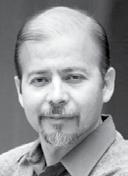
En 1970 —a la vez que colaboraba en los editoriales para Los Angeles Times — comenzó a reportar y servir como gerente de la estación de televisión KMEX de habla hispana. El ícono chicano rodolfo ( rudy) Acuña —en aquel entonces presidente del Departamento de Estudios Chicanos de la universidad Estatal de California en Northridge— afirmó que Salazar comenzó a enfocarse en los abusos de poder del Departamento de Policía de Los Ángeles (LAPD), y como resultado, las autoridades policiales le habían ordenado atenuar
sus reportajes televisivos, alegando que estaba “incitando al pueblo”, quienes “no estaban preparados para ese tipo de análisis ”. Según Acuña, las autoridades policiales le habían advertido a salazar que “si continuaba con ese tipo de cobertura se lo iban a cobrar ”.
Antes de morir, Salazar había expresado inquietud porque lo seguía y vigilaba la policía. La mayoría de los historiadores chicanos concuerdan que el LAPD lo consideraba su enemigo.
El día del evento de la Moratoria , los chicanos comenzaron a rechazar la intrusión policial en el Parque Laguna, y el confrontamiento se expandió hacia las calles y hasta el bulevar Whitier. Durante el caos, varios establecimientos fueron saqueados, dañados y quemados. El reporte de un hombre armado con un rifle condujo a funcionarios del Aguacil a la entrada de la licorería Silver Dollar Bar. Un proyectil de “gas lacrimógeno de alta velocidad”, diseñado para penetrar triplex de una pulgada, fue disparado a través de una puerta abierta, alcanzando a Salazar en la cabeza y causándole la muerte.
Durante el sondeo o investigación judicial sobre los hechos en torno a la muerte de Salazar, se estableció que los funcionarios policiales tenían la libertad de demonizar a la comunidad chicana y/o tildar de agitadores a los chicanos que ofrecían su testimonio. reporteros de la revista La Raza , testigos de los eventos en la licorería Silver Dollar Bar, proporcionaron evidencia fotográfica que contradecía el relato de los funcionarios del Alguacil. Estos agentes alegaron que los asistentes se rehusaron a evacuar la licorería. una fotografía entregada por el reportero raúl ruiz de La Raza, mostraba a los uniformados obligando a los asistentes, que trataban de salir, a regresar a la licorería justo antes que fuera disparado el proyectil hacia el interior.
Durante la investigación, lo que fue percibido por los chicanos como un “motín po -
Para Que No Olvidemos
Revisitando la Moratoria Chicana II
licial ”, fue descrito por la policía como producto de la “naturaleza revoltosa” típica de la gente chicana. Adicionalmente, lo que los testigos chicanos vieron como el asesinato de salazar, fue declarado como una muerte accidental e imprevista. La exigencia de los líderes comunitarios de que los alguaciles que dispararon el proyectil que mató a Salazar asumieran su responsabilidad fue ignorada.
un editorial de Los Angeles Times el 16 de octubre, 1970, ofreció la siguiente crítica de los resultados de la investigación: “Así es como está el asunto: un hombre inocente fue asesinado por un arma que no debería haber sido utilizada en las circunstancias que lo fue — pero las autoridades no culpan a nadie. No es necesario participar entrar en legalidades sobre si hubo o no suficiente evidencia para procesar al alguacil que disparó para que uno se dé cuenta de que la decisión de no procesarlo deja al público sin respuesta sobre los hechos que debería conocer.”
Después de la Moratoria del 29 de agosto, la controversia empeoraría con nuevas y continuas intrusiones coercitivas de la policía en la comunidad chicana para disuadir el activismo por los derechos civiles que reinaba en ese momento.
Rudy Acuña analizó los intentos de la Sección de Conspiración Criminal (CCS) de LAPD para socavar al NCMC y a los Brown Berets. También investigó cómo varias agencias policiales, entre ellas la Oficina Federal de Investigación (FBI); la División de Alcohol, Tabaco y Armas de Fuego (ATF); el Departamento de Hacienda (IRS) y el LAPD, utilizaron informantes para espiar a grupos
8 Joaquín sePteMBer 2023
derech O s civiles
Ed Ramírez linden, ca
Lest We Forget
Revisiting the Chicano Moratorium II
in its aftermath, controversies swirled around the events during, and after the August 29, 1970, Chicano Moratorium. Among them were allegations that rubén salazar was targeted and assassinated by sheriff’s deputies, that provocateurs had infiltrated the National Chicano Moratorium Committee (NCMC) to destroy it, and that there was a massive cover-up of malfeasance by law enforcement officials.
But… Who was Rubén Salazar? Born in Juarez, Mexico, but raised in El Paso, Texas, Salazar was a respected mainstream journalist who had worked for various newspapers including the Los Angeles Times. A rare commodity in that white-maledominated profession during the 1950’s, 60’s, and 70’s. A military veteran, he went to college on the GI Bill, studied journalism, and became an investigative reporter for the El Paso’s Herald Post focusing on border issues. From there he had stints in santa rosa and san Francisco before landing in Los Angeles. His various assignments had included: on the ground coverage of the Vietnam War; serving as the Los Angeles Times Latin American bureau Chief based in Mexico City; and in 1969, covering educational, political, and policing issues in the Los Angeles Mexican American community.
considerados militantes, entre ellos el nCMC y los Brown Berets
Según Acuña, Eustacio (Frank) Martínez fue enlistado por el ATF para infiltrar organizaciones chicanas en calidad de “informante y agente instigador ”. Aceptó hacer esto para que no se le enjuiciara por una infracción federal de posesión de armas.
Rosalío Muñoz describió cómo Martínez había infiltrado el NCMC para fomentar procedimientos más agresivos. Martínez catalogó a Muñoz como demasiado blando y débil. Finalmente logró sustituir a Muñoz y fungió en el puesto de director del nCMC por un corto período de tiempo.
El historiador F. Arturo Rosales declaró que Martínez recibió continúa a la vuelta
In 1970, while still an editorial contributor for the Los Angeles Times, he began reporting and serving as station manager at KMEX, a Los Angeles spanish-language t V station. Chicano icon rodolfo (rudy) Acuña —then Chair of the California State University, Northridge’s Chicano Studies Department— asserted that s alazar began to drill down on Los Angeles Police Department (LAPD) misconduct, and in response, law enforcement officials had ordered him to tone down his television coverage. t hey alleged that he was “inciting the people ” who were “not ready for this kind of analysis.” According to Acuña, police authorities told salazar “they would get him if he continued his coverage.”
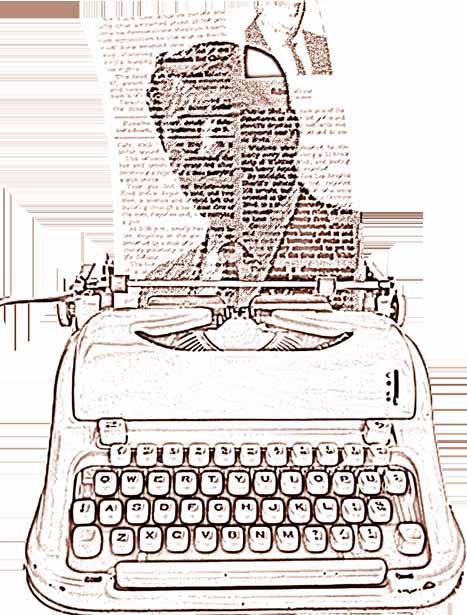
concern that he was being followed and monitored by police. Most Chicano historians agree that he was perceived by the LAPD as an enemy.
on the day of the Moratorium, Chicanos started fighting back against the police intrusion into Laguna Park, and the battle spilled into the streets and down Whittier blvd. in the ensuing chaos, several businesses were looted, damaged, and burned. A report of a man with a rifle brought sheriff’s deputies to the doorstep of the Silver Dollar Bar. A “high velocity tear gas projectile,” designed to penetrate 1-inch plywood, was shot through an “open doorway” hitting Salazar in the head and killing him.
At the inquest, or judiciary inquiry into the facts surrounding Salazar’s death, law enforcement officials were given free rein to malign the Chicano community and to red-bait Chicanos offering testimony. La Raza magazine reporters, eyewitnesses to the events at the Silver Dollar Bar, provided photographic evidence that contradicted the Sheriff’s deputies’ testimony. Deputies claimed that patrons refused to vacate the bar. A photograph provided by La Raza reporter, Raúl Ruiz, showed deputies forcing patrons, trying to exit, back into the bar just before the projectile was fired inside.
During the inquest, what was perceived by Chicanos as a “police riot ” was portrayed by law enforcement officials as a product of the Chicano community’s “riotous nature.” Further, what Chicano witnesses viewed as the assassination of salazar was depicted as an unintentional or accidental death. the demand by community leaders to hold the sheriff’s deputy accountable, for firing the projectile that killed Salazar, was ignored.
A Los Angeles Times Editorial on october 16, 1970, offered the following criticism of the inquest findings: “
So this is where the matter stands: an innocent man
Before his death, Salazar had expressed continued on next page
sePteMBer 2023 Joaquín 9 civil rights
civil ri GH t s • derec H os civiles
Moratoria Chicana II
from the previous page
was killed by a weapon that should not have been used when it was used, but the public authorities assign no blame. One does not have to enter a legal argument over whether there was, or was not, sufficient evidence for prosecution of the deputy to observe that the decision not to prosecute leaves the public in the dark as to the facts it should know.”
Following the August 29th Moratorium, controversy would escalate with continued police continued coercive intrusions into Chicano community affairs to counter civil rights activism.
Rudy Acuña analyzed efforts by LAPD’s Criminal Conspiracy section (CCs) to undermine the nCMC and Brown Berets. He also, explored how various law enforcement agencies including the Federal b ureau of investigation (Fbi); Alcohol tobacco and Firearms (ATF); Division of the Internal Revenue Service (IRS); and the LAPD used informants to spy on groups that were deemed militant including the nCMC and the Brown Berets.
According to Acuña, Eustacio (Frank) Martínez was recruited by the ATF to infiltrate Chicano organizations and act as an “informant and agent provocateur.” He had agreed to do this to avoid prosecution for a federal firearms violation.
rosalío Muñoz described how Martínez had infiltrated the NCMC and advocated for more aggressive tactics. Martínez portrayed Muñoz as too soft and weak. He was successful in ousting Muñoz from the nCMC chair position and replaced him for a brief period.
Historian F. Arturo rosales stated that Martínez was ordered “to cause confusion. . . to provoke incidents ” to eliminate the Brown Berets and the nCMC. “The police tactics accomplished their goals. Harassment of the NCMC and its Brown Beret core eventually led to its dissolution.”
Apparently, in an act of contrition, Martínez admitted and detailed his relationships with ATF and LAPD handlers, including, ATF agents Fernando ramos and John r iggs as well as CCS/LAPD “officers Valencia, Armas, Savillos, and Domínguez.”


Of course, law enforcement officials denied their relationship with Martínez, and refused to provide reports and documentation
regarding their actions related to the Moratorium. Essentially, they sealed the records, further escalating controversy and inflaming the Chicano community. Additionally, judicial authorities declined to pursue any investigation of police malfeasance.
The Los Angeles County Sheriff’s Department (LACSD) deemed records related to salazar’s death as “exempt from public review” violating the California Public Records Act. Thomas A. Saenz, Mexican American Legal Defense and Educational Fund (MALDEF), President and General Counsel said that this was patently illegal. On December 4, 2012, MALDEF won a settlement for the release of unredacted autopsy and investigative documents, and coroner’s photo records. Incredibly, these records were withheld from the Chicano community for 42 years contributing to a legacy of distrust, and suspicion.
(Correction: in Part i of this article (included in the last edition), the laPd was identified as the police agency that used the liquor store incident to justify clearing laguna Park and attacking those gathered for the Moratorium. east los angeles is unincorporated los angeles county and the jurisdiction of the los angeles sheriff’s department (lacsd). it was the lacsd that decided to clear the park and attack the Moratorium participants.)
(Corrección: en la 1a. Parte de este artículo (incluido en la edición pasada) el departamento de Policía de los Ángeles fue identificado como la agencia policial que utilizó el incidente en la licorería para justificar el despeje de laguna park y el ataque a los que se habían reunido para la Moratoria. el este de los Ángeles es un condado no incorporado de losÁngeles,bajo la jurisdicción del departamento del sheriff de los Ángeles (lacsd). Fue el lacsd el que decidió despejar el parque y atacar a los participantes de la Moratoria).
Chicano Moratorium II viene de la vuelta
órdenes de “crear confusión… para provocar incidentes” que permitieran eliminar a los Brown Berets y el nCMC. “Las tácticas de la policía lograron sus objetivos. El acoso al nCMC y al núcleo de los Brown Berets con el tiempo terminó en su disolución.
En un aparente acto de arrepentimiento, Martínez admitió y detalló su relación con los
BIBLIOGRAPhY
Acuña, Rodolfo F. Occupied america: a history of chicanos. new York: harper & row, Publishers, 1988.
KCET. Artbound, l a raza , season 9, episode 5. 3 april 2018. Website. 1 september 2023.
l a Plaza de Cultura y Artes. inside the chicano Moratorium: 50 Years l ater with rosalío Muñoz. los angeles, 2020. Youtube.
MALDEF. MaldF secures release of unredacted records in rubén salazar case. los angeles, 6 december 2012. Website. Meier, Matt S and Feliciano Ribera. Mexican americans/american Mexicans: From conquistadores to chicanos. new York: hill and Wang, 1993.
Rosales, F. Auturo. Chicano: the history of the Mexican american civil rights Movement. houston: arte Público Press, 1997.

USC Annenberg: school for communication and Journalism. rescuing rubén salazar. los angeles, 19 september 2013. Youtube.
estrategas del ATF y LAPD, entre ellos los agentes Fernando Ramos y John Riggs de la ATF, así como “los agentes policiales Valencia, Armas, Savillos y Domínguez” de la CCS/LAPD. Como era de esperarse, los policías negaron su relación con Martínez y se rehusaron a proveer informes o documentación en torno a sus actividades relacionadas con la Moratoria. En efecto, sellaron los expedientes, exacerbando aún más la controversia y agraviando aún más a la comunidad chicana. Asimismo, las autoridades judiciales se negaron a investigar cualquier probable abuso de las agencias del orden.
El Alguacil del Condado de Los Ángeles (LACSD) declaró los expedientes en torno a la muerte de Salazar “exentos de acceso público”, lo cual quebranta la Ley de registros Públicos de California. Thomas A. Sáenz, presidente y asesor jurídico del Fondo Mexicoamericano por la Defensa Legal y la Educación (MALDEF), dijo que era evidentemente ilegal. El 4 de diciembre, 2012, MALDEF ganó una conciliación legal para la publicación de documentos de investigación y de la autopsia sin redacción, así como registros fotográficos del forense. Increíblemente, estos expedientes estuvieron ocultos de la comunidad chicana por 42 años, agregando al legado de desconfianza y sospecha.
10 Joaquín sePteMBer 2023
Aveces, proyectamos nuestro propio odio y distanciamiento para con otras personas. Y luego, esperamos que la gente sea lo suficientemente
Replanteando la Educación Rethinking Education
thomas Block, lorain, Oh
Currículo #3
estúpida como para aceptar esa perversidad. Dieciocho estados lo han hecho (hasta ahora), prohibiendo la Teoría Crítica de Raza (Crt) en las aulas1. Eso es a lo que se enfrenta Estados Unidos: una negación sistémica y una evasión de sus prejuicios y racismo. De eso se trata la Crt: el prejuicio racial sistémico está arraigado en la historia y la sociedad estadounidenses. Es más que un prejuicio individual y hay más que suficiente para todos... ¡Pregúntenle a cualquier supremacista blanco! El racismo “está arraigado en leyes, políticas e instituciones ”. Es el pecado original de Estados u nidos 2 . Y es esa parte de la historia estadounidense la que muchos intentan mantener oculta. La falsedad de proteger a los niños de Florida —un tortuoso intento de ocultar el pasado racista de Florida— pasa a ser un encubierto “vehículo para una agenda política”. La proyección de CRT de DeSantis como “ racismo sancionado por los ‘wokes’ ”
Lesson Plan #3
sometimes, we project our own hatred and avoidance onto other people. And then, we hope people are stupid enough to accept that vitriol. Eighteen states have done so (so far), banning the Critical Race Theory (Crt) in classrooms.1 t hat is what America is facing – a systemic denial and avoidance of its bias and racism. t hat is what Crt is about: systemic racial bias is ingrained in American history and society. it is more than individual prejudice and there is more than enough to go around; ask any white supremacist! racism “is embedded in laws, policies and institutions.” It is America’s original sin 2. And it is that part of American history that many try to keep hidden.
t he falsity of protecting Florida’s children – a devious attempt to hide Florida’s racist past – becomes not a covert “vehicle for a political agenda.” DeSantis’ projecting Crt as “woke-sanctioned racism” is a political, racecraft, Floridian-owned novelty concocted through state governmental coding as sins of omission – an excising Black history and, at the same time, the resurrection of Native-like boarding school philosophies into Florida’s school system. t he guilt and “hurt feelings” have also been excised as school choice. When you couple DeSantis’ political and social values with racist parents and school board bureaucrats, the inequality and despair of competing boards may still turn the school systems into “a smoldering crater of inequality and despair, with countless students trapped in the rubble ”.3
Perhaps, I can give DeSantis some slack —his mind is so occupied with capitalist economic opportunity (like Disney World) that he has little time for truth and equity. His ranting is a juggling of white racist edification under the Republican banner! Still, in Brooklyn N.Y., CRT inspired classes have become “one of the most valuable experiences of [students’] school years, because it has allowed them to focus on Black life and history beyond the continued on next page
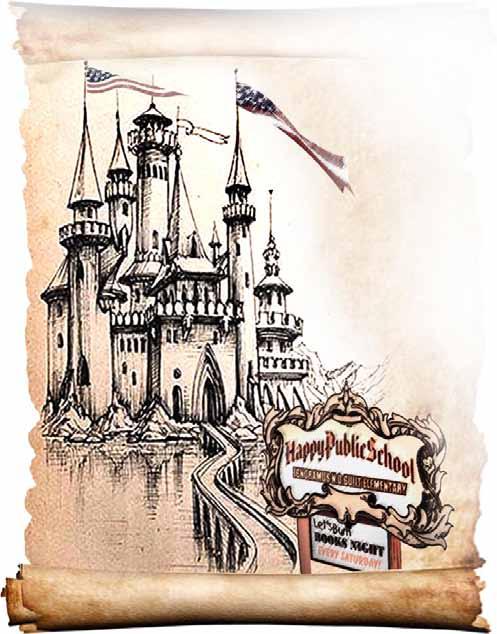
sePteMBer 2023 Joaquín 11
education • educaciÓn
continúa a la vuelta
Lesson Plan No.3
from the previous page
education • educaciÓn
fundamentals of slavery and civil rights”4 and it explores those “diverse experiences and identities of Black communities in the U.S.” A high school counselor in an innerring suburban school district in northern ohio is in high regard of her school district’s mandates requiring at least one of two African American classes, either African American Studies or African American Literature, be passed to obtain a high school diploma. The majority of students take both classes (personal communication). t his counselor’s positive critique matches that of the Philadelphia School District:
[i]ncorporating narratives of a wide variety of voices, including those whose narratives have been historically marginalized, must be regarded as an asset to teaching and learning and will provide a more enriching and authentic learning experience for all students in Philadelphia regardless of racial identity.5

t he Advanced Placement course in African American Studies, according to the governor and his ilk, “lacks educational value ” and is a “ vehicle for a political agenda.”6 DeSantis should know —ironically, if not purposely, his fear-mongering has imposed white supremacy as the honest and true history of America7 . it must be interesting if not a slight-of-hand how Florida will survive its conflicting factions. t he Life of Rosa Parks, for example, is in limbo in Florida’s educational system. Her race may be deleted alongside elements of the discrimination that she endured. While Florida’s Department of Education mandates the teaching of Black history (which may only be an allusion or parody), “critical race theory is banned in Florida public schools.” This has created problems for textbook publishers in the state where
books such as The Life of Rosa Parks in the Studies Weekly lessons is running the gauntlet between the Florida Department of Education and the Florida Citizens Alliance which served on DeSantis’ education advisory team which has been empowered by the Parental r ights in Education Bill back in 2022. Perhaps DeSantis will whitewash his state’s history and civics. But, for how long can Florida’s arrogance survive the ridicule of the rest of the world?
Currículo Nº3
viene de la vuelta
es una novedad política, racial y de autoría floridiana, inventada a través de la codificación gubernamental estatal como pecados de omisión: eliminar la historia negra y, al mismo tiempo, la resurrección de un filosofía nativista en el sistema escolar de Florida. La culpa y los “sentimientos heridos” también han sido eliminados como opción escolar. Cuando se combinan los valores políticos y sociales de DeSantis con los padres racistas y los burócratas de las juntas escolares, la desigualdad y la desesperación de las juntas en competencia aún pueden convertir sistemas escolares en “un humeante cráter de desigualdad y desesperación, con innumerables estudiantes atrapados entre los escombros ”3 .
Quizás pueda darle un poco de holgura a DeSantis —su mente está tan ocupada en oportunidades económicas capitalistas (como Disney World) que tiene poco tiempo para la verdad y la equidad. sus desvaríos son un juego de malabarismos con la edificación racista blanca ¡todo bajo la bandera republicana! Aun así, en Brooklyn, Nueva York, las clases inspiradas en Crt se han convertido en “una de las experiencias más valiosas de los años escolares [de los estudiantes] , porque les ha permitido centrarse en la vida y la historia de los negros más allá de los fundamentos de la esclavitud y los derechos civiles”4 y explora esas “diversas experiencias e identidades de las comunidades negras en los EEUU ”. Una orientadora de escuela secundaria en un distri-
NOTES
1. alex Wagner tonight, 20 may, 2023
2. Wall street Journal, 28 jan.23; legal defense Fund
3. the capitolist, april 9, 23; also see ‘the 74’ march 30, 2023
4. new York times, 22 Mar. 23
5. Broad and liberty, July 26, 22
6. Wall street Journal, 28 Jan. 23
7. news releases, dec. 15, 2021


to escolar suburbano del norte de ohio tiene en alta estima los requisitos de su distrito escolar que exigen que se apruebe al menos una de dos clases afroamericanas, ya sea Estudios Afroamericanos o Literatura Afroamericana, para obtener un diploma de escuela secundaria. La mayoría de los estudiantes toman ambas clases (comunicación personal). La crítica positiva de esta orientadora con la del Distrito Escolar de Filadelfia:
[i]ncorporar narrativas de una amplia variedad de voces, incluidas aquellas cuyas narrativas han sido históricamente marginadas, debe considerarse una ventaja para la enseñanza y e instrucción porque brinda una experiencia de aprendizaje más enriquecedora y auténtica para todos los estudiantes de Filadelfia, independientemente de su identidad racial.5
El curso de Colocación Avanzada (AP) en Estudios Afroamericanos, según el gobernador y los de su calaña, “carece de valor educativo” y es un “vehículo para una agenda política”6. DeSantis debería saberlo —irónicamente, si no intencionalmente, su alarmismo ha impuesto la supremacía blanca como la honesta y verdadera historia de Estados unidos.7 Va a ser interesante —si no artificioso— ver cómo Florida sobrevivirá a sus facciones en conflicto. El libro La Vida de Rosa Parks, por ejemplo, está en el limbo en el sistema educativo de Florida. su raza puede ser eliminada al igual que elementos de la discriminación que ella misma sufrió. Si bien el Departamento de Educación de Florida exige la enseñanza de la historia de los negros (que ahora puede ser sólo una alusión o una parodia), “la Teoría Crítica de Raza (CRT) está prohibida en las escuelas públicas de Florida ”. Esto ha creado problemas para los editores de textos educativos en el estado, donde libros como La Vida de Rosa Parks en las lecciones de Studies Weekly corren peligro entre el Departamento de Educación de Florida y la Alianza Ciudadana de Florida, que formó parte del equipo asesor de educación de DeSantis, y ha sido robustecido por el Proyecto de Ley “Derechos de los Padres en la Educación” allá por 2022. Quizá DeSantis blanqueará la historia y el civismo de su estado. Pero ¿cuánto tiempo podrá sobrevivir la arrogancia de Florida mientras hace el ridículo ante el resto del mundo?
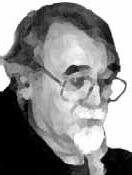
12 Joaquín sePteMBer 2023
thomas Block lorain, Oh
richard ríos stockton, ca
American Dream Revisited
they risk it all, fording icy rivers and oceans, treacherous currents, scaling barbed wire fences, crossing frozen wastelands and searing deserts in quest of fields of plenty, streets of gold, and golden arches, in search of El Dorado, the almighty dollar, Unholy Grail of wandering quail.
There it stands: Temple to the Almighty Dollar, verdant God: We worship you we give you thanks for the banks, and Wall Street, Easy Street where “you earn as much in day as your countryman earns in a week”: Send me your meek and downtrodden and I will give you stress, high blood pressure.
Come, climb the Corporate ladder fodder for the stock market, grist for the Mill, eat your fill, with a frill. Success and competition, air conditioned


The marriage of Dow Jones and Paula Jones, no bones; Two-car garage is no mirage, a swimming pool to drool, Welcome to credit, taxes, and schemes, debit one dream.
1- 800 Rent-A-Dream, or nightmare no better for the wear, E-Z chair; No Lazy Boy here, here you earn your pay, son pull your weight, get overweight
Strap on the Stroke Machine
Triple By-Pass, by-ways and my-ways transplanted dreams, n’ schemes
Stress, excess, success, sweet blessing: Let’s do lunch?
Looks Like a Good Day to Die
Reflections on Death and Dying
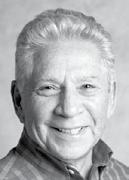
Will I die in my sleep and awaken in someone else’s dream?
Land of the free, home of the brave but what about the slave? Freedon of Speech within reach so long as you preach the Staus Quo, you know? Affordable equality; pay by the day diversity Rich boy university; English Only regardless of race, color or creed, indeed. I pledge allegiance to the flag, or else. One nation under God. But which one, you ask? Division of church and state creates a part-time God, Generic Deity, watered down so as not to offend, no lightning bolts, or hell is swell with me.
Yet, the dream persists, a beacon touting that freedom of speech is within reach and liberty and justice for all, is a windfall that enthralls; A dream that bigotry dies and equality applies; That I can rise as high as the sky and have my slice of the pie.
It is the dream
To think what I wish to think and discover the missing link and believe in a God of my choice, no invoice, or no God at all; to stand 10 feet tall. With a full stomach, a roof over my head on a feathered bed.

Once I was asleep and found myself in a trance, in a dance perchance; I walked alone, in a wasteland with no purpose or direction. When a voice said: “There, there is the path” I obeyed, and slipped through the crack When I awoke, I knew I had only been sleeping and that this was the real dream.
Or will I die on some seaweed shrouded beach? Will It be sunny, or cloudy or rainy, or windy ? Will it be slow or quick, or violent or gentle, the closing of an eyelid? And will my life fast-forward before me, a 30 minute video of a 80+ year life of strife sprinkled with moments of bliss, a kiss?
Will I dissolve, or melt or merge into darkness or emerge into the light? Will I drift, ascend into Milky Ways or evaporate into universes, and traverse time, or court eternity and walk through walls, brother to the wind? Will the ancestors be there to greet me, to meet me?
Will I float above my coffin, see myself, taut and dry inside?
Or sit among the mourners, and wonder who is being eulogized with such glowing words?
Will I be mad at Jose who does not cry? Or with Consuelo who looks glad? Or with my dear friend who was too cheap to send flowers? Will I weep to see Beto cry, having no idea loved me so?
Will I gloat at those who are sorry now they treated me so badly? Or who took me for granted? Will I weep with they whom I hurt or demeaned and regret I did not ever tell them I was sorry or that I loved them? Will I be greeted by trumpets and harps, or the groans and heat of tortured souls in the underworld or purgatory?
Will it be cold and damp underground? Will the rain seep into my sepulcher or the weight of earth smoother my breath? Will my memory remain with the living and will their prayers cheer me in the dark corners and moments of eternity? Will I awaken only to realize It was life that was the dream, or simply never awaken again?
sePteMBer 2023 Joaquín 13
poetr Y • poesÍa
el viaje artístico de saúl es el de un pintor mexicano que radica en los estados unidos, y traduce la experiencia de sus coterráneos migrantes en lienzo y pintura. influenciado por los grandes maestros pictóricos del pasado y del presente, entrelaza elementos clásicos y contemporáneos, documentando cultura, personajes históricos y actuales de su sociedad en el mundo, como asimismo capturar la esencia del alma de las personas a través del trabajo que desempeñan.


Pintando el Alma

14 Joaquín sePteMBer 2023
d OW nt OW n st O c K t O n ( detail ) P
trOK ita
rincesa
Painting theSoul



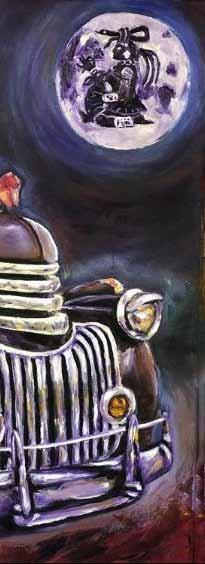
saul’s artistic journey is that of a Mexican painter who resides in the united states, and translates the experience of his fellow migrants on canvas and paint. influenced by the great painterly masters of the past and present, he intertwines classic and contemporary elements, documenting culture, historical and current figures of his society in the world, as well as capturing the essence of people’s souls through the work they profess.
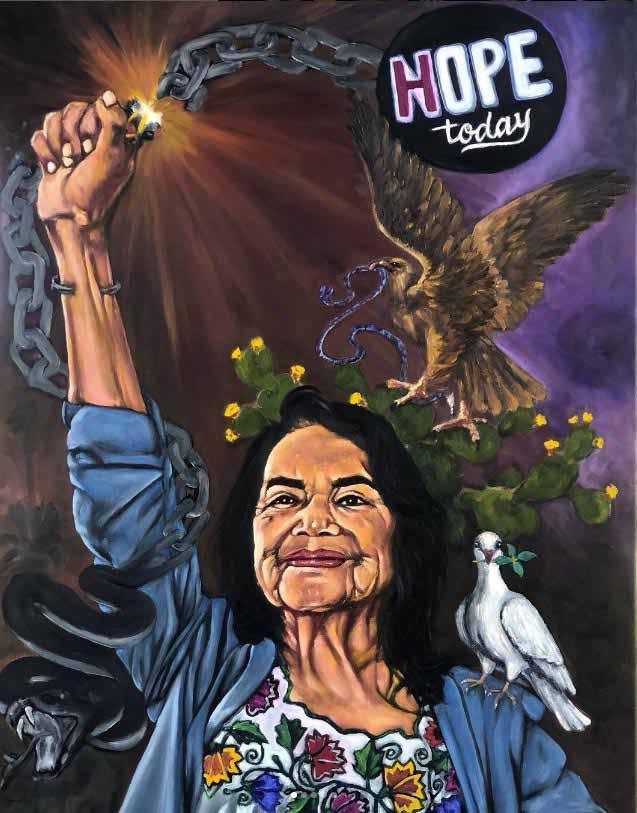
S aúl• C ruz
sePteMBer 2023 Joaquín 15
d O l O res
huerta
nativO
sOnrisa de alegr Í a
Painting theSoul
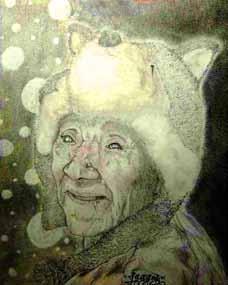
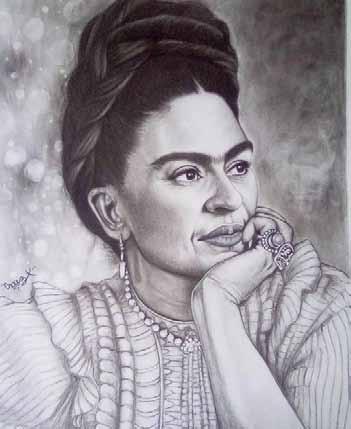
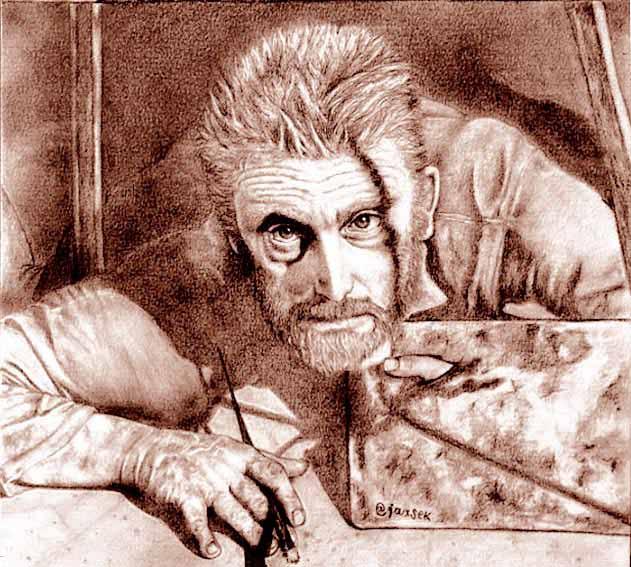
Saúl•Cruz

el Alma
16 Joaquín sePteMBer 2023
art focus • enfoque artÍstico
Jesus christ
aBuela JOseFa
F rida
K irK dOuglas/ van gOgh
Pintando
La Decimocuarta Enmienda
Aquí hay dos posibilidades sueltas a considerar en esta coyuntura política.
En primer lugar está esta noción de que se puede argumentar que Donald trump no es elegible para postularse para la presidencia. trump ha prometido postularse incluso si es declarado culpable, incluso desde prisión. La Constitución exige, a su juicio, que uno sólo haya nacido en los Estados Unidos, haya vivido aquí durante catorce años, y sea mayor de 35 años, apoyándose en el artículo II de dicha Constitución. Y que esos son los requisitos.
Pero hay otra limitación —la que se encuentra en la Decimocuarta Enmienda, sección 3, que establece:
“Ninguna persona podrá ser Senador o Representante en el Congreso, o candidato a Presidente o Vicepresidente, ni ocupar cargo alguno, civil o militar, bajo los Estados Unidos o bajo cualquier Estado, quién, habiendo prestado previamente juramento —ya sea como miembro del Congreso, o como funcionario de los Estados Unidos, o como miembro de cualquier legislatura estatal, o como funcionario ejecutivo o judicial de cualquier Estado— de defender la Constitución de los Estados Unidos, haya participado en una insurrección o rebelión contra la misma, o prestado auxilio o estímulo a sus enemigos. Pero el Congreso puede, mediante el voto de dos tercios en cada Cámara, eximir de dicha inhabilidad ”.
Donald ciertamente prestó dicho jura -
Just two sort of random political thoughts for consideration.
First is the thought that one can argue that Donald Trump is ineligible to run for the presidency. trump has vowed to run even if convicted probably even in jail. t he Constitution requires, in his view, that one only have been born in the United States, have lived in the united states for fourteen years, and be over the age of 35, relying on Article ii of the Constitution. And these are requirements.
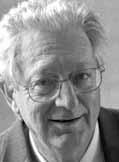
But there is another limitation, which is found in the Fourteenth Amendment, section 3, which states:
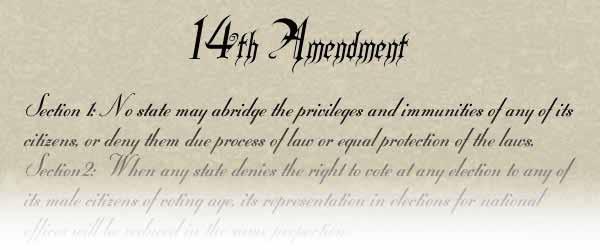
“No person shall be a Senator or Representative in Congress, or elector of President and Vice-President, or hold any office, civil or military, under the United States, or under any State, who, having previously taken an oath, as a
member of Congress, or as an officer of the United States, or as a member of any State legislature, or as an executive or judicial officer of any State, to support the Constitution of the United States, shall have engaged in insurrection or rebellion against the same, or given aid or comfort to the enemies thereof. But Congress may by a vote of two-thirds of each House, remove such disability.”
Donald certainly took the requisite oath. so the remaining question is whether he “engaged in insurrection or rebellion against the same, or given aid or comfort to the enemies thereof.”
t here are no provisions on how to determine whether a person engaged in insurrection. At the time of ratification, the primary targets of this section were Confederate. t he section applied to all confederates who had served in the Union Army (e.g., Robert E. Lee) or who had been in government (undoubtedly but also likely all state and local governments).
There is, as far as I know, little if any law on the matter. t hat leaves the issue open for discussion and interpretation. Anyone who served in the Confederate Army would be easy to exclude assuming their Confederate military records existed.
David Wellenbrock Former sJc chief deputy district attorney ex-jefe de fiscales asistentes del sJc
but it would seem that a judicial proceeding that made the determination would suffice. It would not, however, seem to require a determination beyond a reasonable doubt as this is a civil matter and not a criminal case (although a criminal conviction of insurrection would surely qualify). it would be a civil matter and those cases generally require only a preponderance of the evidence.
continúa a la vuelta
mento como dicta la ley, de modo que la respuesta pendiente es si “participó en una insurrección o rebelión contra la misma, o prestó auxilio o estímulo a los enemigos” que intentaron vulnerarla. no existen disposiciones sobre cómo determinar si una persona participó en una insurrección. En el momento de la ratificación de esa Enmienda Constitucional, el objetivo principal era inhabilitar a los confederados [en la Guerra de Secesión]. La sección aplicaba a todos los confederados que habían servido en el Ejército de los EEUU (por ejemplo, Robert E. Lee) o que habían servido como funcionarios de gobierno (sin
it now appears that trump is facing a number of indictments. i ndictments are returned by grand juries, which are proceedings which determine whether the target has committed named offenses.
continued on next page
sePteMBer 2023 Joaquín 17 current issues • actualidad
current issues • actualidad
Fourteenth Amendment from the previous page
t he burden of proof is preponderance of the evidence. it is my understanding that among the 91 counts he faces there is at least one, and maybe more, which constitute ‘insurrection’. If so, he would be disqualified.
t here is the question of how this would be actually be raised. And it seems to me that when nomination papers are submitted to a Secretary of the State, that Secretary has to determine eligibility. It is my guess, that without prompting, no Secretary of State would think of this and merely rubber-stamp the papers. But if objections were filed with the Secretaries of State at the start of the filing period, the matter would have be addressed. it would further seem to me that Mr. trump then would have to refute the claim; that he would have to establish that he did not engage in insurrection.
Moreover, should the secretary certify his qualifications, those who filed the objections ought to be able to sue in court to have the certification reversed. With 50 states plus a couple of venues, some secretaries might not certify trump’s candidacy which would exclude him from the ballot in those states. of course he could sue, assuming he could find enough lawyers. Most significantly, these would not be suits that he could draw out: he would have to pursue them immediately. Certainly would be a can of worms.
Interesting thoughts, even if a bit juvenile.
And for the Democrats, I suggest that those concerned ought to talk to Diane Feinstein and have her resign from the senate; to have Governor newsom appoint Kamala Harris as the California Senator; and have her resign, leaving the Vice Presidency vacant. t his solves the problem of her as his potential running mate in 2024 as she is not a great help to his re-election hopes.
but intriguingly is how the Vice-Presidency would be filled. This is not crystal clear. t here are provisions for the House to select and it seems conventional wisdom that the Speaker of House is next in line. I am not completely convinced that this is what would
occur or is required to occur, but assuming this is the case, it raises interesting possibilities.


Should it be the Speaker, Mr. McCarthy would ascend. A very lame-duck job and he would certainly be side-lined. but one wonders about who, and even how, the Republicans would select a new Speaker of the House. The process was certainly difficult for the current House. However, one should not revel in this too greatly as this would provide an opportunity for a very competent Speaker be chosen by the republicans. but it would change the House, where not much good has been transpiring.
Another whimsical scenario upon which to ruminate..
Decimocuarta Enmienda viene de la vuelta
duda, pero probablemente también, en todos los gobiernos estatales y locales).
Hasta donde yo sé, hay poca o ninguna ley al respecto. Eso deja la cuestión abierta a debate e interpretación. Sería fácil excluir a cualquiera que hubiese peleado por el ejército confederado —suponiendo que existiera su registro militar como confederado.
Pareciera que un procedimiento judicial sería suficiente para tomar esa determinación. i ncluso no parecería requerir de una determinación más allá de toda duda razonable ya que se trata de un asunto civil y no de un caso penal (aunque una condena penal por insurrección seguramente sería otra cosa). Además, un asunto civil generalmente requiere sólo una preponderancia de la evidencia.
Ya es obvio que trump enfrenta una serie de formalizaciones. Estas acusaciones son dictaminadas por un Jurado de Instrucción (Grand Jury) —un procedimiento que determina si el acusado ha cometido los delitos mencionados. La culpabilidad se comprueba con preponderancia de la evidencia. tengo entendido que entre los 91 cargos que enfrenta hay al menos uno, y tal vez más, que constituyen “insurrección”. De ser así, sería descalificado como candidato.
Ahora está la pregunta de cómo se plantearía realmente esto. Y me parece que cuando los documentos de nominación se presentan a un
Secretario de Estado, ese Secretario tiene que determinar la elegibilidad. Supongo que, sin nadie se lo pide, ninguno de esos Secretarios de Estado consideraría esto y se limitaría a aprobar los documentos. Pero si las objeciones se hubieran presentado ante los secretarios de Estado al inicio del período de presentación, el asunto se habría abordado. Además, me parece que trump tendría entonces que refutar la afirmación; que tendría que demostrar que no participó en la insurrección.
Además, si a pesar de todo el Secretario certifica que Trump cualifica, quienes presentaron las objeciones deberían poder demandar ante los tribunales para que se revoque la certificación. Con 50 estados más un par de dependencias, es posible que algunos secretarios no certifiquen la candidatura de Trump, lo que lo excluiría de la boleta en esos estados. Por supuesto que podría demandar —suponiendo que pudiera encontrar suficientes abogados. Lo más importante es que no se trata de demandas que pueda prolongar: tendría que interponerlas inmediatamente. sin duda destaparía una caja de pandora.
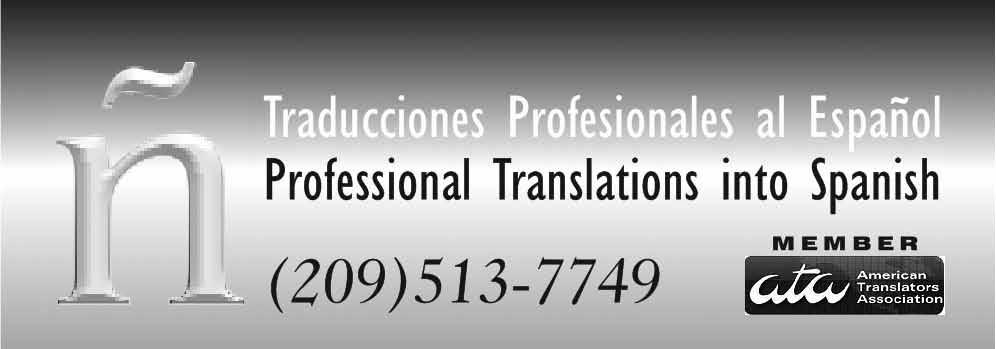
Cavilaciones interesantes, aunque algo ilusas.
Y para los demócratas, sugiero que los interesados hablen con Diane Feinstein y hagan que renuncie al senado; hacer que el gobernador newsom nombre a Kamala Harris como senadora de California; y hacerla dimitir, dejando vacante la Vicepresidencia. Esto resuelve el problema de que ella sea su posible compañera de fórmula en 2024, ya que no es de gran ayuda para sus esperanzas de reelección.
Pero eso de cubrir la vicepresidencia es algo espinoso... no está muy claro. Hay disposiciones que la Cámara debe seleccionar y parece sabiduría convencional que el presidente de la Cámara sea el siguiente en la fila. No estoy completamente convencido de que esto sea lo que ocurriría o lo que sea necesario que ocurra, pero suponiendo que así sea, surgen interesantes posibilidades.
Si fuera el Vocero de la Cámara Baja, McCarthy ascendería. Pero su gestión ha sido un fracaso y sin duda lo harían a un lado. Aparte de eso uno se pregunta quién, e incluso cómo, elegirían los republicanos a un nuevo presidente de la Cámara. El proceso fue ciertamente difícil para la Cámara presente. Sin embargo [los demócratas] no deberían alegrarse demasiado con esto, ya que esto brindaría la oportunidad de que los republicanos eligieran a un presidente muy competente. Pero eso también cambiaría la dirección de la Cámara, donde no se ha producido prácticamente legislación alguna.
otro caprichoso escenario al que habría que darle vueltas.
18 Joaquín sePteMBer
2023
Xenophobia and Union Values
throughout history, the United States has been a beacon of hope for millions of individuals seeking a better life. immigrants who have arrived on its shores or crossed its borders have played a vital role in shaping the nation’s identity and integration. However, it is equally important to recognize the significant role played by American labor in facilitating their successful integration and advancement.
Industries such as manufacturing, agriculture, construction, and the service sector have thrived due to the labor provided by both native-born and immigrant workers. t he availability of jobs has not only ensured immigrants’ financial stability but also given them a chance to contribute to the American economy. t his report aims to shed light on the diverse contributions of united states labor provide and how they foster a harmonious and prosperous society, immigrants included. t hese include:
Income: Labor movements and unions in the united states —by advocating for fair wages, safe working environments, and the right to collective bargaining— have significantly improved wages and working conditions for all workers, including immigrants. united states labor has not only uplifted the quality of life of its members, but also helped bridge the gap between native-born and immigrant workers, fostering inclusivity and unity.
La Xenofobia y los Valores Sindicales
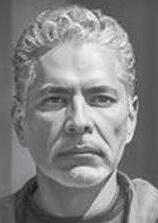
lo largo de la historia, Estados unidos ha sido un faro de esperanza para millones de personas que buscan una mejor vida. Los inmigrantes que han llegado a sus costas o han cruzado sus fronteras han desempeñado un papel vital en la configuración de la identidad y la integración de la nación. Sin embargo, es igualmente importante reconocer el importante papel desempeñado por los trabajadores estadounidenses a la hora de facilitar su exitosa incorporación y avance.
Industrias como la manufactura, la
integration. Labor unions and organizations have offered language training programs, cultural assimilation initiatives, and community outreach to help immigrants adapt to their new surroundings… enabling immigrants to feel more connected and valued in society —solving an endemic problem that kept immigrants apart for generations, perpetuating abuse, mistrust and other ills.
Aagricultura, la construcción y el sector de servicios han prosperado gracias a la mano de obra proporcionada por trabajadores tanto nativos como inmigrantes. La disponibilidad de empleos no sólo ha asegurado la estabilidad financiera de los inmigrantes sino que también les ha dado la oportunidad de contribuir a la economía estadounidense. Este informe tiene como objetivo ilustrar las diversas contribuciones de la mano de obra estadounidense y cómo fomentan una sociedad armoniosa y próspera, incluidos los inmigrantes. Éstas incluyen: ingresos: Los movimientos laborales y los sindicatos en Estados unidos —al abogar por salarios justos, entornos laborales seguros y el derecho a la negociación colectiva— han mejorado significativamente los salarios y las condiciones laborales de todos los trabajadores, incluidos los inmigrantes. El sector laboral estadounidense no solo ha mejorado la calidad de vida de sus miembros, sino que también ha ayudado a cerrar la brecha entre los trabajadores nativos y los inmigrantes, fomentando la inclusión y la unidad.
Rights: Labor movements have historically advocated for the rights and interests of all workers, regardless of their origins —actively fought against discrimination, exploitation, and xenophobia, providing a safety net for immigrant workers. By offering legal aid, lobbying for fair
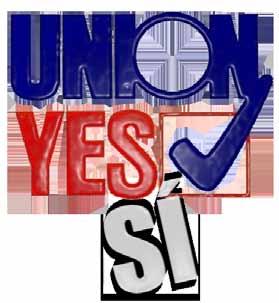
Diversity: united states labor has recognized the importance of linguistic and cultural diversity in promoting social cohesion and continued on next page
Diversidad: Los sindicatos estadounidenses han reconocido la importancia de la diversidad lingüística y cultural en la promoción de la cohesión y la integración social. Los sindicatos y las organizaciones han ofrecido programas de capacitación en idiomas, iniciativas de asimilación cultural y extensión comunitaria para ayudar a los inmigrantes a adaptarse a su nuevo entorno... permitiendo que los inmigrantes se sientan más conectados y valorados en la
sePteMBer 2023 Joaquín 19
continúa a la vuelta l
t emas l aborales
abor i ssues •
J. Ángel Picón seiu local 521 dublin, ca
l abor i ssues • t emas l aborales
Xenophobia and
Union
Values from the previous page
Training: united states labor has been instrumental in developing training programs and apprenticeships to equip immigrants with the necessary skills for successful integration into the workforce. Labor unions and organizations have empowered immigrants to secure stable employment and advance their careers by providing vocational training, language courses, and job placement assistance.
Education: r ecognizing that education is the key to upward mobility, United states labor has advocated for equal access to education for immigrant children. Labor unions have supported initiatives that provide quality education, including English as a second Language (EsL) programs, ensuring that immigrant children have the opportunity to thrive academically and contribute to society.
dientemente de sus orígenes, y han luchado activamente contra la discriminación, la explotación y la xenofobia, proporcionando una red de seguridad para los trabajadores inmigrantes. Al ofrecer asistencia jurídica, ejercer presión a favor de políticas de inmigración justas y fomentar la solidaridad, los sindicatos estadounidenses han desempeñado un papel fundamental en la protección de los derechos y la dignidad de los inmigrantes.
DETRÁS DEL ÉXODO
MEXICANO A ‘EL NORTE’ immigration policies, and fostering solidarity, United States labor has played a pivotal role in protecting the rights and dignity of immigrants.
Capacitación: La mano de obra estadounidense ha sido fundamental en el desarrollo de programas de capacitación y aprendizaje para dotar a los inmigrantes de las habilidades necesarias para una integración exitosa en la fuerza laboral. Los sindicatos y las organizaciones han empoderado a los inmigrantes para que consigan un empleo estable y avancen en sus carreras brindándoles capacitación vocacional, cursos de idiomas y asistencia para la colocación laboral.
About the author: angel Picón is a highly dedicated advocate at service employees international union (seiu), tirelessly fighting for workers’ rights, particularly in vital sectors like healthcare and social equity. his experience spans over 20 years in community organizing, political campaigns, and labor relations.
Sobre el Autor: angel Picón es un muy comprometido intercesor del sindicato internacional de empleados de servicios (seiu), que aboga incansablemente por los derechos de los trabajadores, particularmente en sectores vitales como la atención médica y la equidad social. Posee una experiencia que abarca más de 20 años en organización comunitaria, campañas políticas y relaciones laborales.
In short, the contributions of united states labor to the betterment of immigrants are immeasurable. by creating economic opportunities, fostering social integration, and investing in education and skill development, labor movements have played a pivotal role in immigrants’ successful assimilation and advancement. recognizing and appreciating the contributions of united states labor benefits immigrants and strengthens the fabric of American society. As the nation continues to embrace its diverse tapestry, it is crucial to acknowledge the longstanding partnership between United States labor and immigrants, ensuring a prosperous future for all.
La Xenofobia y los Valores Sindicales
sociedad, resolviendo un problema endémico que mantuvo a los inmigrantes separados durante generaciones, perpetuando el abuso, desconfianza y otros males.
Derechos: Los movimientos laborales históricamente han abogado por los derechos e intereses de todos los trabajadores, indepen-
ElR eyde México
México “lindo y querido”, como proclama la vieja balada– es también una tierra de deprimente disparidad.
Paupérrima y, no obstante, hogar del hombre más rico del mundo, Carlos Slim Helu. Del 2010 al 2013, la revista de negocios Forbes clasificó a Slim como la persona más adinerada del mundo.
Educación: r econociendo que la educación es la clave para la movilidad social, los sindicatos estadounidenses han abogado por la igualdad de acceso a la educación para los niños inmigrantes. Los sindicatos han apoyado iniciativas que brindan educación de calidad, incluidos programas de inglés como segundo idioma (ESL), asegurando que los niños inmigrantes tengan la oportunidad de prosperar académicamente y contribuir a la sociedad.
En resumen, las contribuciones de la mano de obra estadounidense al mejoramiento de los inmigrantes son inconmensurables. Al crear oportunidades económicas, fomentar la integración social e invertir en educación y desarrollo de habilidades, los movimientos laborales han desempeñado un papel fundamental en la exitosa asimilación y avance de los inmigrantes. reconocer y apreciar las contribuciones de la mano de obra estadounidense beneficia a los inmigrantes y fortalece el tejido de la sociedad estadounidense. A medida que la nación continúa abrazando su diversidad, es crucial reconocer la asociación de larga data entre los trabajadores y los inmigrantes de los Estados Unidos, asegurando un futuro próspero para todos.
¿notan algo incoherente en este contraste? Muchos mexicanos, ricos o pobres, creen que lo hay.
Slim es un fumador de puros, magnate con una fortuna estimada, hasta el 4 de julio, de 63 mil millones de dólares. Al igual que Bill Gates, no cree en caridad alguna. Si usted es un joven mexicano, probablemente nació en uno de los hospitales Star Médica de slim y su electricidad le llega a su casa por sus cables marca Condumex. usted también maneja por carreteras pavimentadas por la constructora CiLsA de slim y su vehículo utiliza combustibles bombeados desde sus plataformas de perforación Swecomex.
Lo más probable es que usted se comuniques a través de sus líneas telefónicas de Telmex. Además, probablemente fume el tabaco de slim y hace sus compras en el Sears Roebuck de México, subsidiaria de su colosal Grupo Carso. sus empresas emplean a más de 200.000 personas.


Según Celso Garrido, economista de la Universidad Nacional Autónoma de México (UNAM), el dominio de los conglomerados de su país asfixia el crecimiento de las empresas más pequeñas, lo que resulta en una escasez de empleos mejor pagados, lo cual motiva a muchos mexicanos a buscar una vida mejor al norte del r ío Grande.
La revista Forbes señala que la fortuna de slim ha aumentado en los últimos dos años en al menos 23 mil millones de dólares debido a sus acciones en el creciente mercado de valores de México, aunque el desempleo y los salarios se han mantenido
20 Joaquín sePteMBer 2023
viene de la vuelta
PO rraz O s
BEhIND ThE
MEXICAN EXODUS TO EL NORTE
TheKingofMexico
Mexico “lindo y querido” — beautiful and beloved, as the old ballad proclaims — is also a land of depressing disparity.
Dirt poor and home of the one of world’s richest man, Carlos Slim Helu. From 2010 to 2013, Slim was ranked as the richest person in the world by the Forbes business magazine.
is there something wrong with this picture? Many Mexicans, rich or poor, think so. slim is a cigarsmoking, tycoon worth, as of July 4, $63 billion. He doesn’t believe in charitable causes a la bill Gates.
if you’re a young Mexican, you were probably born in one of slim’s star Medica hospitals and use electricity
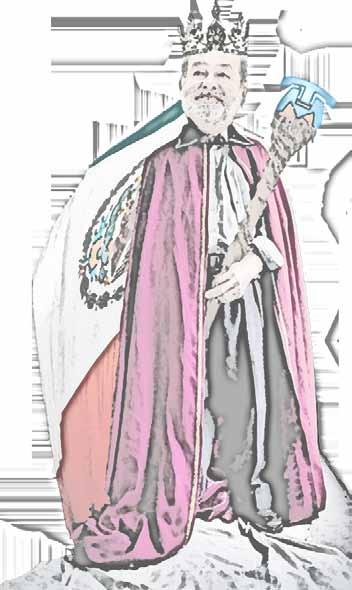
más o menos iguales.
A medida que la fortuna de slim continúa creciendo, también lo hacen las críticas. Los medios de comunicación mexicanos han mencionado que slim se ha comprometido a donar 6 mil millones de dólares entre tres fundaciones caritativas y planea un nuevo edificio para un museo de arte europeo accesible a los mexicanos de pocos recursos.
“¿Un museo de arte europeo?” pregunta Ernesto Beltrán, un ciudadano estadounidense naturalizado que cruzó a Estados Unidos en el maletero de un Cadillac.
beltrán comenta que sería difícil vivir algún día en México sin comprar ninguno de los productos producidos por una corporación Slim.
“El señor slim es muy rico y poderoso. En un país con tanta gente pobre, es casi un crimen”.
Entonces, ¿cuáles son las posibilidades de que nuestro vecino del sur se convierta en una nación donde haya más gente con recursos que carencias? Solo hay dos, escasa a ninguna.
carried by his Condumex-brand cables.
You also drive on roads paved by the slim’s CiLsA Construction Company and your vehicle uses fuels pumped from his swecomex drilling platforms.
More than likely you communicate through his Telmex phone lines. Plus, you probably smoke Slim’s tobacco and shop at Sears Roebuck of Mexico, a subsidiary of his colossal Carso Group. His companies employ more than 200,000 people.
According to Celso Garrido, a Universidad nacional Autonoma de Mexico (UNAM) economist, the domination of his country’s conglomerates chokes off growth of smaller companies, thus resulting in the shortage of good jobs and driving many Mexicans to seek better lives north of the r io Grande.


Forbes Magazine notes that slim’s fortune has surged in the last two years by at least $23 billion because of his holdings in Mexico’s booming stock market, although unemployment and wages have remained more or less the same.
As slim’s fortunes continue to blossom, so has criticism. t he Mexican media have mentioned that he has pledged to donate $6 billion to three charitable foundations and plans a new building for an art museum directed at exposing disadvantaged Mexicans to European art.
“A museum for European art?” asks Ernesto Beltran, a naturalized u.s. citizen who crossed into the united states in the trunk of a Cadillac.
beltran comments that it would be hard to live one day in Mexico without purchasing
any of the products produced by a slim corporation.
“señor slim is so wealthy and powerful. In a country with so many poor people, it’s almost criminal.”
so what are the chances for our southern neighbor becoming a nation of more haves than have-nots? There are two, slim and none.
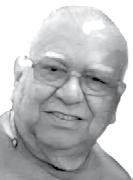
sePteMBer 2023 Joaquín 21 PO rraz O s
Andy Porras sacramento, ca

22 Joaquín sePteMBer 2023
Snippets from the novel ‘FEAR NOT EVIL’
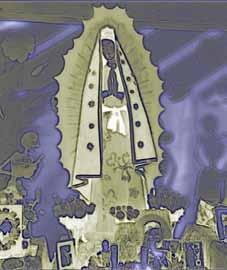
Mi Casa es su Casa iii
Fragmentos de la novela ‘NO TEMAN A NADIE’
Ch
APTER VII
“Yeah, the pendejo engineer broke the train. Now it does not start,” interrupted the second and continued arguing.
The traffic jam stretched as far as he could see. José whistled his cucuy call, hoping Don robo could hear it and return the call. After several whistles, he gave up. He did not hear a return whistle from Don Robo. The traffic jam got worse and the people more frustrated: horns honked, people cussed at each other, blaming each other for the calamity.
“Traffic is jammed on both sides of the railroad tracks on Tenth Street and probably on other crossings as well. t he train is not moving,” José reported back upon his return to Doña Ro.
She wondered if Don Robo was stuck in the traffic jam, still negotiating a labor contract or whether he would not come home at all, as he’d done so many times before. on the third hour, Rosario decided to let the hungry people eat. She knew that she was taking a risk of inviting violence. At least twice a year, Don robo would cause such a scene that almost always someone was badly hurt. People have to eat, thought Rosario. She put out the word to re-invite the conejitos to our conejera for a meal.
t he smell of fresh cut cilantro and onions for the Pico de Gallo and soups meant that they were about to be served. Most of the food could be kept warm or even reheated, but the Pico de Gallo had to be fresh and sweet to the palate.
Rosario waited until the room filled with friends and family before she blessed the meal and all who had prepared it, and thanked the Lord for the health of her family and friends,
“
Nuestro bendito Dios, gracias por la salud de nuestra familia y amigos, también
CAPíTu Lo VII
“Sí, el pendejo del conductor estropeó el tren. Ahora no arranca”, interrumpió el segundo y siguieron discutiendo.
Los coches esperando pasada se extendían hasta donde alcanzaba la vista. José silbó su ‘llamada de cucuy’, esperando que Don Robo pudiera escucharlo y responderle. Después de varios intentos, se rindió. No escuchó el silbido de respuesta de Don Robo. El atasco empeoraba y la gente estaba cada vez más frustrada:
gracias a Dios por esta comida que fue preparada por todos en la familia.”
she added a prayer that the negotiations would go well. “Espero que todo va bien con los negocios de Don Robo.” Rosario made the sign of the cross with her right hand.
“Amen,” they all followed.
First, the elders were served and sat comfortably at their place of choice. t he men followed in honor of their hard work. The women and young continued on next page
tocaban su claxon, se maldecían entre ellos, culpándose unos a otros por la calamidad.
“El tráfico está congestionado a ambos lados de la línea del tren, en la Calle Décima, y probablemente también en otros cruces. El tren no se mueve”, informó José a su regreso con Doña Ro.
Se preguntó si Don Robo estaría atrapado en ese congestionamiento, o todavía negociando un contrato laboral, o si no volvería a casa… como había pasado tantas veces antes. A las tres horas, Rosario decidió que había que dar de comer a los que esperaban. sabía que corría el riesgo de alguna violencia. Al menos dos veces al año Don Robo provocaba una escena como ésta y en la que casi siempre alguien resultaba gravemente herido. “La gente tiene que comer”, pensó Rosario. E hizo correr la voz para que los conejitos vinieran a comer a la conejera
El olor a cilantro y cebolla recién cortados para el Pico de Gallo y las sopas significaba que estaban a punto de servirse. La mayor parte de la comida se podía mantener caliente o incluso recalentar, pero el Pico de Gallo tenía que ser fresco y dulce al paladar.
Rosario esperó hasta que el salón se llenase de amigos y familiares antes de bendecir la comida y a todos los que la habían preparado, y agradeció al Señor por la salud de sus familiares y amigos.
“Nuestro bendito Dios, gracias por la salud de nuestra familia y amigos, también gracias a Dios por esta comida que fue preparada por todos en la familia”.
Añadió una oración para que las negociaciones salieran bien. “Espero que todo salga bien con los negocios de Don Robo.” Rosario se santiguó con la mano derecha.
“Amén ”, todos continúa a la vuelta
sePteMBer 2023 Joaquín 23 a novel • novela
arturo M. vásquez, las cruces, nM
Mi Casa Es Su Casa III from
girls helped with the children next before sitting down to eat.
The talking quieted down as they ate their first bites of food. While they chewed their favorite food, without exception they all wondered what had happened to Don Robo.
“Why was he so late?”
Ch APTER 6 ALTAR oFFERINGS
Since the beginning of the human race, further back than the Paleolithic era, man has constructed altars at funeral sites in an attempt to communicate with the spiritual world. Through time, the dead have been buried in the ground with a single cross above the grave, or in a tomb with sculptured decorations, as in the sarcophagi of the Constantine epoch where the body rests in peace and the spirit leaves the body a little bit at a time, or the opposite, as in the instantaneous departure, a launch into space by Pakal, a Mayan leader who is etched on a stone sarcophagus in the Temple of Inscriptions pyramid in Palenque, México. In prayer and in song, the gods are invoked to accompany the dead into the spirit world. A burial site, an urn full of the dead man’s ashes, or an empty sarcophagus serves as a reminder of the journey’s origin. From this ending, or new beginning, the dead can return home and refuel with the food and sweet bread left on the altar and find a sense of home in his photographs decorating the altar.
Diego was no stranger to the ritual of building altars. As a child he participated in many Día de los Muertos celebrations, where he learned about his grandparents, great grandparents and great-great grandparents from old pictures that reappeared in november of each year. Diego placed e mpanadas de calabaza , turnovers made of pumpkin, and pan dulce with pink and yellow toppings to the left of the La Virgen de Guadalupe “The dead must be fed,” he prayed silently. He and his childhood friend Carlos had also built altars in their hideouts: great places for storing secret treasures like weapons and the food supply.
Back at the office the next morning, Diego continued to studying old files, looking for some link that would implicate a third person of the Five star Hotel homicides.
As Diego studied each file, he found other unsolved homicides that had altars, newspaper articles and roses. In a case, which occurred in San Francisco’s Chinatown, the victim was
a killer who targeted transvestites. According to the evidence he reviewed, the crime scene; a burned Chinese sculptured candle with multiple wicks protruding from the structure. The sculpture was designed in such a way that all the wicks could be lit with one match. Diego felt a warm rush travel through his body and his face flushed with blood speeding to the brain— another connection.
Diego shared conclusions with the captain and his colleagues on the investigation team:
“I’ve found two cases, one in Chinatown and another in Gilroy that contain similar evidence found at the Claremont Hotel homicides. All three had altars with roses, an intricate Chinese candle, and newspaper clippings implicating the murder victim as a person of interest in a series of earlier homicides.” He went on: “In the case of the Gilroy homicide, the murder took place in a closed-up tent at the Garlic Festival t he victim was a wealthy farmer. It had an altar, too, but with 6 roses on it. . to be continued in the next issue...
Mi Casa Es Su Casa III viene de la vuelta repitieron.
Primero, se sirvió a los ancianos —los que se sentaron cómodamente en el lugar de su elección. Los hombres los siguieron, en reconocimiento a su sacrificado trabajo. A continuación las mujeres y las niñas ayudaron con los pequeños antes de sentarse a comer.
La conversación se calmó mientras comían sus primeros bocados de comida. Mientras masticaban su comida favorita, todos sin excepción se preguntaban qué había pasado con Don Robo.
“¿Por qué estaba tan atrasado?
CAPíTu Lo 6 oFRENDAS DEL A LTAR
Desde el comienzo de la raza humana, desde antes del Paleolítico, el hombre ha construido altares en los lugares funerarios en un intento de comunicarse con el mundo espiritual. A través del tiempo, los muertos han sido enterrados en la tierra con solo una cruz sobre la fosa; o en una tumba con decoraciones esculpidas —como en los sarcófagos de la época de Constantino, donde el cuerpo descansa en paz y el espíritu abandona el cuerpo poco a poco; o al revés, en un despegue instantáneo, como el lanzamiento al espacio de Pakal, un líder maya que está grabado en un sarcófago de piedra en la pirámide del Templo de las Inscripciones en Palenque, México. En oración y canto, se invoca a los dioses para que acompañen a los muertos al
mundo de los espíritus. Un lugar de entierro, una urna llena de las cenizas del difunto o un sarcófago vacío sirven como recordatorio del origen del viaje. A partir de este final —o nuevo comienzo— los muertos pueden regresar a casa y repostar con la comida y el pan dulce que le quedan en su altar, y una sensación de hogar en las fotografías que lo decoran.
Diego no era ajeno al ritual de construir altares. Cuando era niño participó en muchas celebraciones del Día de los Muertos, donde aprendió sobre sus abuelos, bisabuelos y tatarabuelos a través de fotografías antiguas que reaparecían en noviembre de cada año. Diego colocó empanadas hechas de calabaza… y pan dulce con aderezos rosados y amarillos a la izquierda de La Virgen de Guadalupe. “Hay que alimentar a los muertos”, oró en silencio. Él y Carlos, su amigo de la infancia, también habían construido altares en sus escondites: excelentes lugares para almacenar tesoros secretos como armas y alimentos.
De regreso a la oficina a la mañana siguiente, Diego continuó estudiando archivos antiguos, buscando algún vínculo que implicara a una tercera persona en los homicidios del Five star Hotel.
Mientras Diego estudiaba cada expediente, encontró otros homicidios sin resolver que tenían altares, artículos periodísticos y rosas. En un caso ocurrido en el barrio chino de San Francisco, la víctima era un asesino que mataba travestis. Según las pruebas que revisó se hallaba la escena del crimen; una escultura china en forma de velón, quemada con múltiples mechas que sobresalían de la columna. La escultura fue creada de tal manera que todas las mechas pudieran encenderse con un solo cerillo. Diego sintió que una cálida ráfaga recorría su cuerpo —su rostro se sonrojó con la sangre corriendo hacia el cerebro: era una conexión.
Diego compartió conclusiones con el capitán y sus compañeros del equipo de investigación:
“He encontrado dos casos, uno en Chinatown y otro en Gilroy, que contienen evidencia similar encontrada en los homicidios del Hotel Claremont. Los tres tenían altares con rosas, una intrincada vela china y recortes de periódico que implicaban a la víctima del asesinato como persona de interés en una serie de homicidios anteriores”, continuó, “En el caso del homicidio de Gilroy, el asesinato ocurrió dentro de una carpa cerrada, durante el Festival del Ajo. La víctima era un granjero rico. También tenía un altar, pero con 6 rosas. continúa en el próximo número...
24 Joaquín sePteMBer 2023
a novel • novela
the previous page

sePteMBer 2023 Joaquín 25
privilege in America is by examining some of the unique characteristics that have increasingly distinguished our society from other advanced industrial democracies. t here are at least five significantly unique and different trends:
1. t he marriage of economic and corporate power, from the U.S. Chamber of Commerce to the Federalist Society moguls, to a single political power, the Republican Party, took place when the potential for combining reagan’s southern strategy with Friedman’s free market economics was finally recognized during the 1980s and has now driven economic inequality in the u s. far beyond that even of Gilded Age America. not only have blacks not received any reparations nor the standard benefits of citizenship from 40 acres and a mule to the GI Bill before 1965, but in the aftermath of the 2007 Great Recession, the average black family assets were reduced more than two fold, while whites lost a third or less of much larger initial endowments.5 t hat wasn’t by law or even a result of organized effort but simply by the geographic disposition of our continuing racism.
2. The repeated massification of incarceration in American society from the use of vagrancy arrest in the Jim Crow Era to the war on drugs repression of our modern civil rights era overwhelmingly disadvantages men of color (black men are 8 times more likely and Latino men five times more likely than white men by age 38 to be jailed) and has led the u.s. to imprison many times more of its people than any other modern industrial society.6 is the threat of young men of color not obvious for all to see?
3. The difficulty of applying accountability standards (whether convicting Donald trump or enforcing ethics on supreme Court judges) and unresponsiveness to majority rule (from supreme Court rulings to gerrymandered representation to suppression of the vote) in the American political system leads to corruption and erosion of political institutions and has begun drastically undermining the quality of American democracy.7
4. The repeated resurgence of racial segregation throughout American society despite many occasions and places when it was

either purposely reduced and combatted or had for relatively substantial periods failed to occur to the point that public schools in America are today more segregated than ever before.8
5. Access to good health care and the quality of the basic infrastructure of society from potable water and good air to public transportation, good schools and affordable housing, has always been in short supply for the people of color in America, but the seriousness of the divergence has recently been more manifest in the death rate due to COVID, the increasing inner cities with contaminated water and bad air, and many other ways.9
t he focus here on the abuse of privilege has concentrated on government and public affairs, and especially the presidency, but the evidence points to our slave owning past as the origin of the racism infection that continues to plague our country. How could anything warp one’s values and respect for his fellow beings and at the same time inflate his sense of personal worth more than exercising the right to own and exploit the lives of others. the way in which white power was advanced, established in law, and spread across the land offered access to privilege to so many, even after slavery was replaced by Jim Crow servitude. At the same time the elevation of privilege for a few undermined the virtue and dignity of the many poor whites manipulated to enforce the privileges of ownership and thereby created the basis for a serious grievance against those who were enslaved.
since the enslaved people were believed to be less human because of their color (remember even indenturement of whites had become prohibited), any improvement in the status of blacks was a potential cause for grievance and resentment against the blacks whose status in comparison to any whites had suddenly reached a higher plain. And so we see how the magic of birtherism in our time created the initial bond of the MAGA republicans to the throne of privilege. t hus what agonizes and polarizes American society today more than those of lofty white power and privilege is their army of loyal followers ready to guard against the advancement of any people of color that try so hard to take something they obviously don’t deserve by breaking the rules of servitude and inferiority.
expandido sobre los inmigrantes en general y, especialmente, sobre aquellos de religiosas color o diferencias.
una manera de entender el impacto diferencial del privilegio blanco en Estados unidos es examinando algunas de las características únicas que han distinguido cada vez más a nuestra sociedad de otras democracias industriales avanzadas. Hay al menos cinco tendencias significativamente únicas y diferentes.

1 La unión del poder económico y corporativo —desde la Cámara de Comercio de Estados unidos hasta los magnates de la sociedad Federalista— con un único poder político —el Partido republicano— tuvo lugar durante la década de 1980 cuando finalmente se reconoció el potencial para combinar la Estrategia sureña de reagan con la Economía de Libre Mercado de Friedman. y ahora ha impulsado la desigualdad económica en Estados unidos mucho más allá de la de la Edad Dorada de Estados Unidos. Los negros no sólo no han recibido ninguna reparación como tampoco los beneficios estándar de la ciudadanía —desde 40 acres y una mula hasta, el GI Bill antes de 1965— sino que después de la Gran Recesión de 2007, los activos familiares negros promedio se redujeron más de dos veces, mientras que los blancos perdieron un tercio o menos de sus dotaciones iniciales mucho mayores.5 Eso no fue por ley ni siquiera como resultado de un esfuerzo organizado, sino simplemente por la disposición geográfica de nuestro continuo racismo.
2 La repetida masificación del encarcelamiento en la sociedad estadounidense —desde el uso del arresto por vagancia en la ‘Era Jim Crow’, hasta la represión de la guerra contra las drogas en nuestra era moderna de derechos civiles— perjudica abrumadoramente a los hombres de color: a la edad de 38 años, los negros tienen ocho veces (los latinos cinco) más probabilidades de ser encarcelados que los hombres blancos. El resultado es que Estados unidos encarcela a su gente mucho más que cualquier otra sociedad industrial moderna.6 ¿no es obvio para todos que los jóvenes de color son una amenaza?
3 Tanto la dificultad de aplicar normas de conducta mínima (ya sea condenar a Donald Trump o regular la ética de los jueces de la Corte suprema) como el desdeño al deseo de la mayoría (desde fallos de la Corte Suprema hasta una representación manipulada y la supresión del voto) en el sistema político estadounidense conducen a la corrupción y la erosión de las instituciones políticas… y ya ha comenzado a socavar drásticamente la calidad de la democracia estadounidense.7 (sigue)
26 Joaquín sePteMBer 2023
Privilege continued from page 4 Privilegio viene de la vuelta c ontinuation s • continuaciones
4 El repetido resurgimiento de la segregación racial en toda la sociedad estadounidense —y a pesar de muchas ocasiones y lugares en los que fue deliberadamente reducida y combatida (o durante períodos relativamente sustanciales) no se produjo hasta el punto de que las escuelas públicas en Estados unidos están hoy más segregadas que nunca.8
5 El acceso a una buena atención médica y a una infraestructura básica de calidad en la sociedad —sea agua potable y aire limpio, transporte público, buenas escuelas, o viviendas costeables—siempre ha sido escaso para la gente de color en Estados unidos. Pero la divergente gravedad ha sido recientemente más manifiesta en la tasa de mortalidad debido al COVID, el aumento de los centros urbanos con agua y aire contaminado, y muchas otras formas.9
El foco en el abuso de privilegios aquí se ha concentrado en el gobierno, los temas públicos y, especialmente, en la presidencia pero la evidencia del origen de la infección racista que continúa plagando a nuestro país apunta a nuestro pasado de propiedad de esclavos. ¿Cómo podría algo desfigurar los valores y el respeto por sus semejantes —y al mismo tiempo enriquecer su sentido de valor personal más allá de ejercer el derecho a poseer y explotar vidas ajenas? La forma en que el poder blanco avanzó, se estableció como ley, y se extendió por todo el país ofreció acceso a privilegios a muchas personas, incluso después de que la esclavitud fue reemplazada por la [posterior] “servidumbre Jim Crow ”. Al mismo tiempo, la elevación de privilegios para unos pocos socavó la virtud y la dignidad de muchos blancos pobres coaccionados para garantizar los privilegios de propiedad y, por lo tanto, creó la base para un serio agravio contra aquellos que estaban esclavizados.
Dado que se creía que los esclavos eran menos humanos debido a su color —recordemos que incluso se había prohibido la contratación de semiesclavos blancos (indentured labor)— cualquier mejora en el estatus de los negros era una causa potencial de agravio y resentimiento de parte de cualquier blanco que repentinamente quedara a la misma altura. Y así vemos cómo la magia del Birtherism (haber nacido aquí) en nuestro tiempo creó el vínculo inicial de los republicanos MAGA con el trono del privilegio. Por lo tanto, lo que agoniza y polariza hoy a la sociedad estadounidense —más allá de aquellos con elevado poder y privilegio blanco— es su ejército de seguidores leales listos para protegerse contra el avance de cualquier gente de color que se intente tomar algo que obviamente no merece, así rompiendo el [tradicionales] reglas de servidumbre e inferioridad.
1 devin dwyer, “Justice alito rejects congress’ power on ethics in public break from peers: analysis,” abcnews.go.com, aug. 2, 2023. this author extensively reviews allegations about the protection of privilege and the especially antidemocratic behavior of the supreme court in “Judicial Manipulation threatens Our democracy: growing challenge of Plutocracy,” JOaQuin, no. 122, May-June 2023.
2 andrea shalat, “Biden says republican Party is ‘undermining’ the nation’s military,” reuters, July 27, 2023.
3 dahlia lithwick and Joseph stern, “Jack smith’s indictment of the entire legal Profession,” slate, aug. 2, 2023. Moreover, the later indictment by the georgia prosecutor against President trump and his 18 co-conspirators is explicitly for an illegal plot to overturn the election results in furtherance of trump’s attempted coup.
4 On august 5, 2023, the u s. government credit rating by international agencies was reduced specifically because of “governance” issues and repeated controversies over the willingness of the republican Party to threaten actions that would impede the normal working of government.
5 the republican partisanization of the supreme court gradually revealed the partisan hostility even to the limited federal affirmative action programs as the roberts court completed their virtual elimination. On republican racism, see leonard Pitts, Jr., “racism is part of republicans’ ideological dna. it’s just that simple.” Miami herald, sept. 30, 2022, and the Public religion research institute’s structural racism index, the national equity atlas, “the racial equity index: a new data tool to drive local efforts to dismantle structural racism,’ July 23, 2020.
6 see “inequalities in jail incarceration across the life course,” Proceedings of the national academy of science usa, May 11, 2021, and emily Widra and tiana herring, “states of incarceration: the global context 2021,” PrisonPolicyinitiative.org, september 2021.
7 several approaches to the measurement of the quality of government among the countries of the world have pointed out the increasing downward evaluation of the united states precisely because of these flaws. over the last half century or so the u s. has fallen from being one of the top handful of democracies in the world to the third or fourth decile. the two of the best and most complementary studies in this political scientist’s opinion are the well-known and widely cited v-dem (varieties of democracy) Project which focuses on the quality of democratic governance based at the university of Gothenburg and the Kofi annan foundation’s new atlas of impunity which emphasizes the abuse of power (unaccountable governance, abuse of human rights, economic exploitation, conflict and violence, and environmental degradation).
8 isabel Wilkerson explains how this has resulted in the equivalent of a caste society in america in her brilliant book caste: the Origins of Our discontents (random house, 2023).
9 samuel l. dickman, et al., “inequality and the health-care system in the usa, the lancet, april 8, 2017 and gregorio a. Millett, et al., “assessing the differential impacts of cOvid-19 on black communities,” annals of epidemiology, July 2020. crises over water supplies to black urban populations have been most noticeable in Jackson, Mississippi, Flint, Michigan, Baltimore, Md, and areas in new York city. recent studies of environmental quality in california have shown that concentrations of dangerous quality air are greatest in areas where hispanic and black populations are concentrated throughout the state.

1 devin dwyer, “el juez alito refuta el poder del congreso sobre ética —en ruptura pública con sus pares: un análisis”, abcnews.
go.com, 2 de agosto de 2023. este autor revisa exhaustivamente las acusaciones sobre la protección de los privilegios y el comportamiento especialmente antidemocrático de corte suprema en “la manipulación judicial amenaza nuestra democracia: creciente desafío de la plutocracia”, JOaQuin, no. 122, mayo-junio de 2023.
2 andrea shalat, “Biden dice que el Partido republicano está ‘debilitando’ a la FFaa de la nación”, reuters, 27 de julio de 2023.
3 dahlia lithwick y Joseph stern, “Jack smith’s indictment of the entire legal Profession”, slate, 2 de agosto de 2023. además, la acusación posterior de la Procuraduría de georgia contra el expresidente trump y sus 18 cómplices es explícitamente por el complot de anular ilegalmente los resultados electorales como parte del intento de usurpación del poder a favor de trump.
4 el 5 de agosto de 2023, la calificación crediticia del gobierno de estados unidos por parte de agencias internacionales se redujo —específicamente debido a problemas de “gobernanza” y repetidas controversias sobre la voluntad del Partido republicano de amenazar con acciones que impedirían el funcionamiento normal del gobierno. 5 el partidarismo republicano en la corte suprema reveló gradualmente una hostilidad sectaria —incluso hacia los limitados programas federales de acción afirmativa, al punto que la corte roberts completó su virtual eliminación. sobre el racismo republicano, véase leonard Pitts, Jr., “el racismo es parte del adn ideológico de los republicanos. es así de simple” (Miami herald, 30 de septiembre de 2022); y en el Índice de racismo estructural (Public religion research institute) y el atlas nacional de equidad, “the racial equity index: a new data tool to drive local efforts to dismantle structural racism”, 23 de julio de 2020. 6 véase “desigualdades en el encarcelamiento carcelario a lo largo de la vida”, actas de la academia nacional de ciencias de eeuu, 11 de mayo de 2021; y emily Widra y tiana herring, “states of incarceration: the global context 2021”, PrisonPolicyinitiative.org, septiembre 2021. 7 varios enfoques para medir la calidad del gobierno entre los países del mundo han señalado que la decreciente evaluación de eeuu se deriva, precisamente, de estos defectos. durante el último medio siglo, estados unidos ha caído de ser una de las principales democracias del mundo al tercer o cuarto decil. los dos mejores y más completos estudios, en opinión de este politólogo, son el conocido y ampliamente citado Proyecto vdem (variedades de democracia), que se centra en la calidad de la gobernanza democrática con sede en la universidad de gotemburgo y el nuevo atlas de la impunidad (del proyecto de la fundación Kofi annan) que enfatiza el abuso de poder (gobernanza irresponsable, abuso de los derechos humanos, explotación económica, conflictos y violencia, y degradación ambiental).
8 isabel Wilkerson explica cómo esto ha resultado en el equivalente de una sociedad de castas en estados unidos en su brillante libro “caste: the Origins of Our discontents” (random house, 2023).
9 samuel l dickman, et al., “inequality and the health-care system in the usa”, the lancet, 8 de abril de 2017 y gregorio a. Millett, et al., “assessing the diferencial impacts of cOvid-19 on black communities”, annals of epidemiology, julio de 2020. las crisis por el suministro de agua a las poblaciones urbanas afroamericanas han sido más notorias en Jackson, Mississippi; Flint, Michigan; Baltimore, Md; y áreas de la ciudad de nueva York. recientes estudios sobre la calidad ambiental en california han demostrado que las concentraciones de aire contaminado son mayores en áreas donde se concentran poblaciones hispanas y negras en todo el estado.
sePteMBer 2023 Joaquín 27
c ontinuation s • continuaciones












































